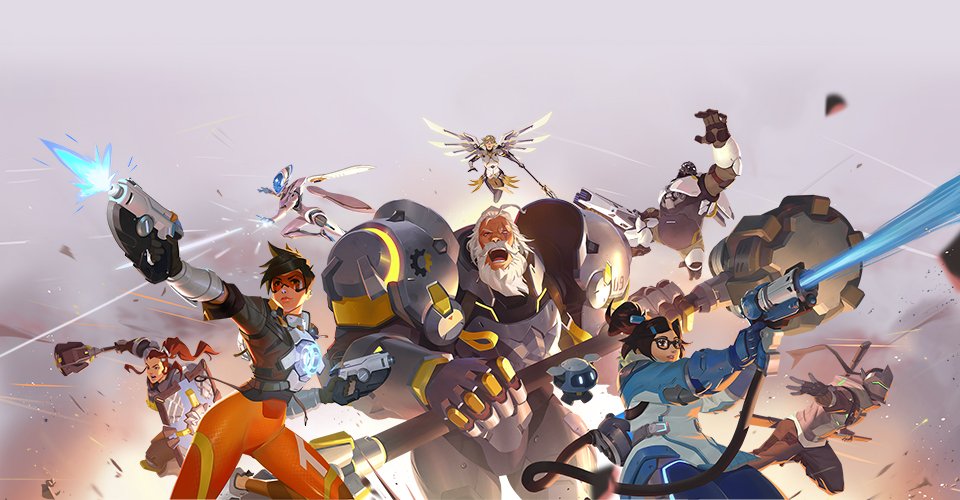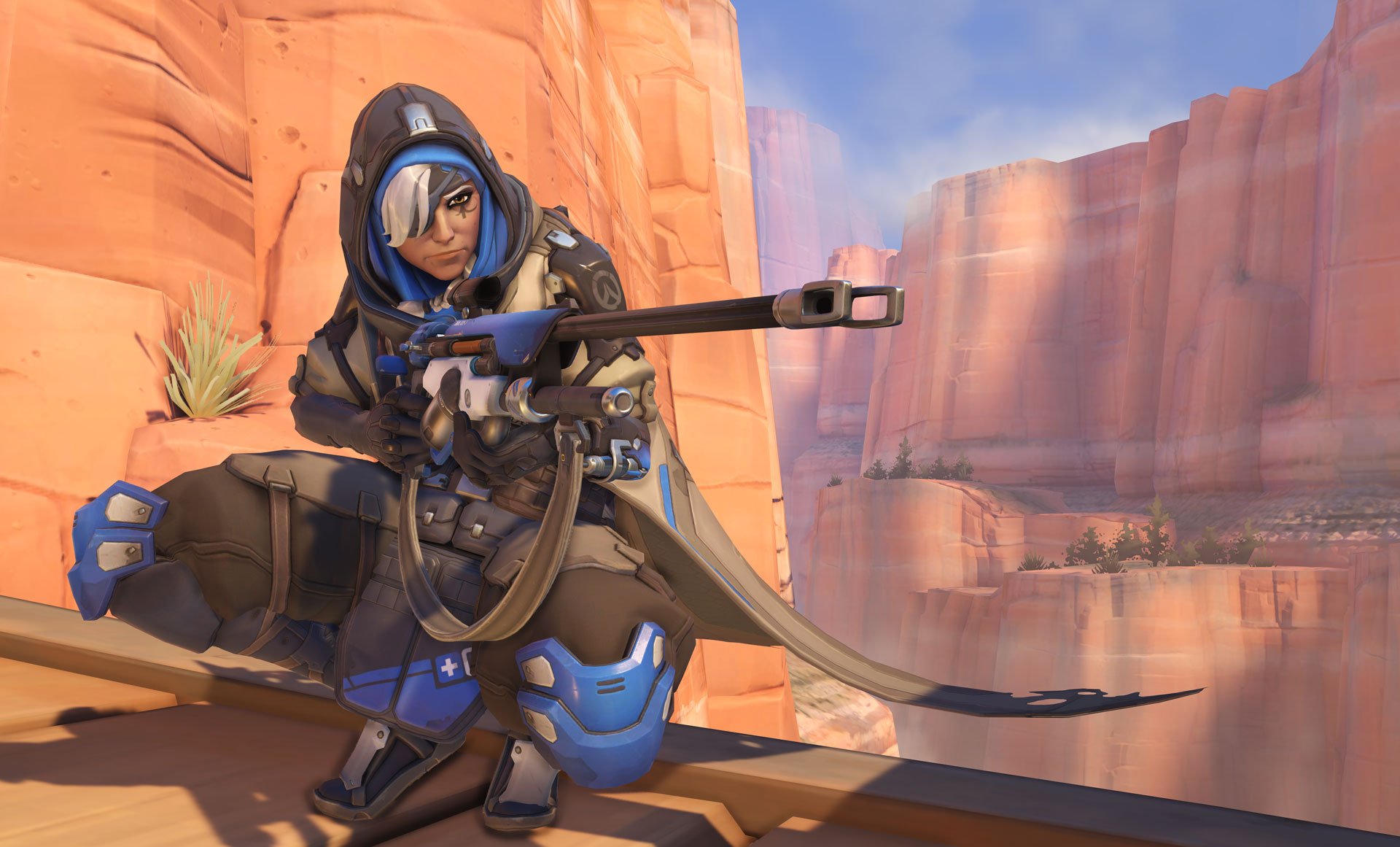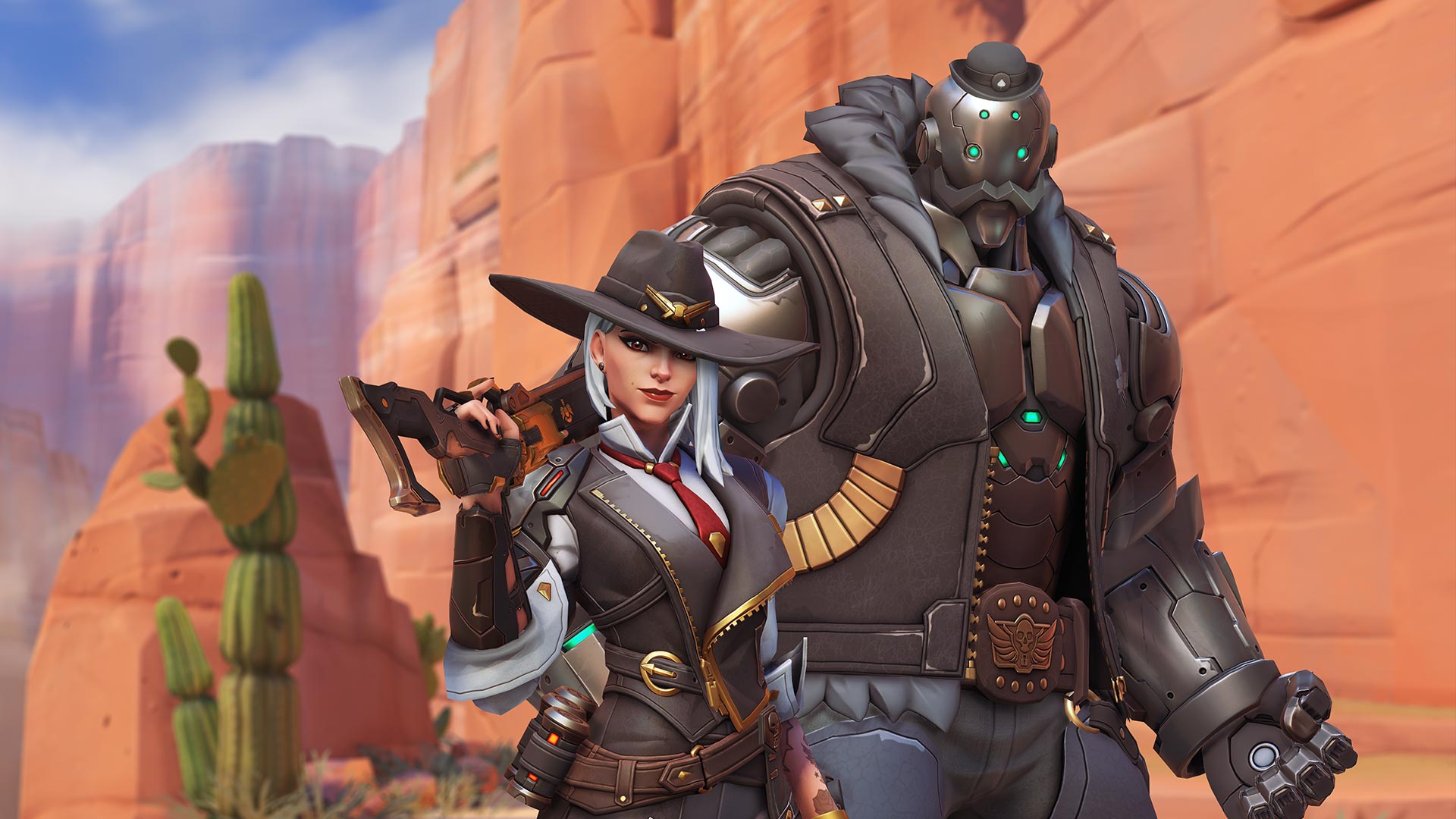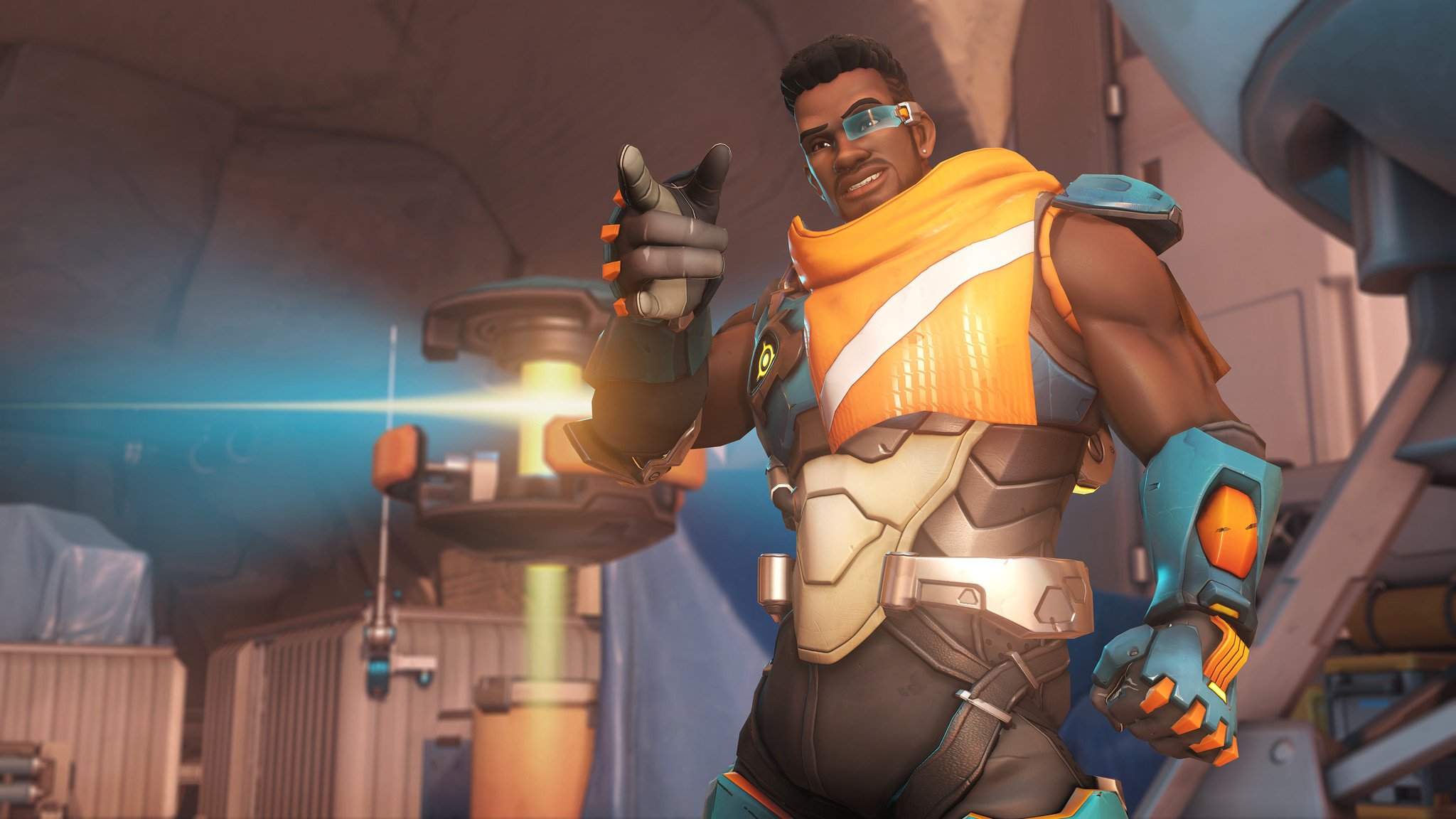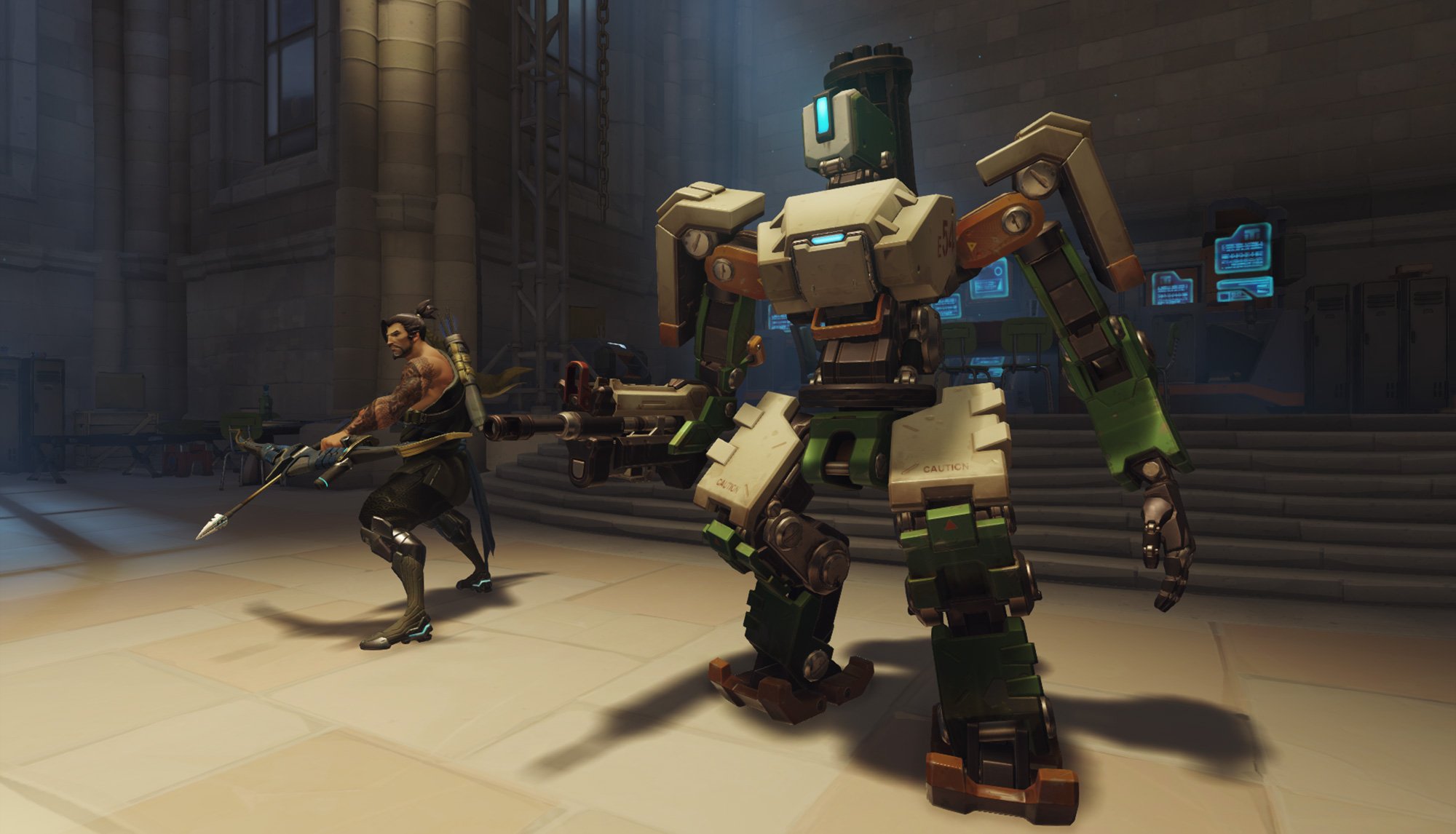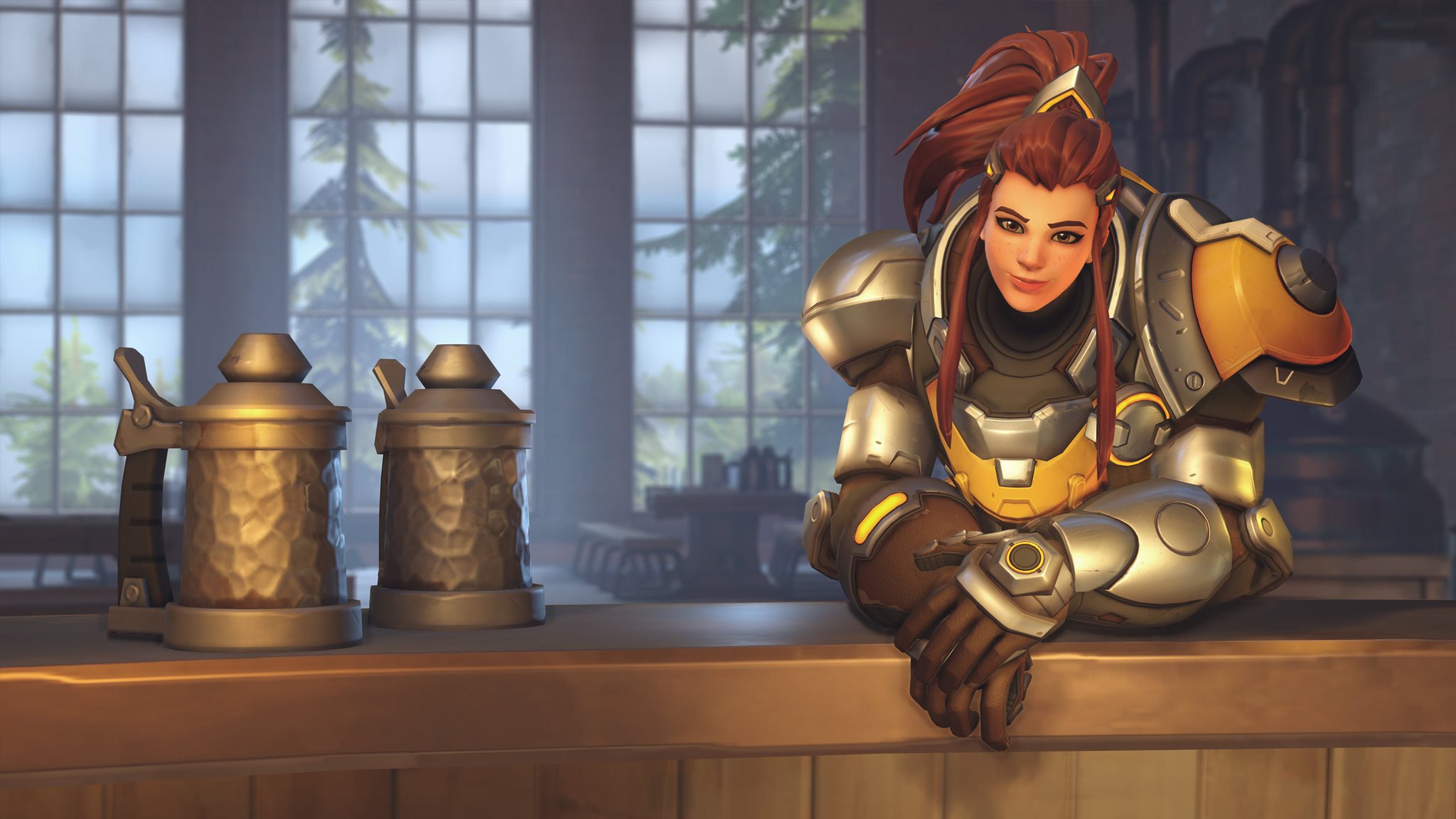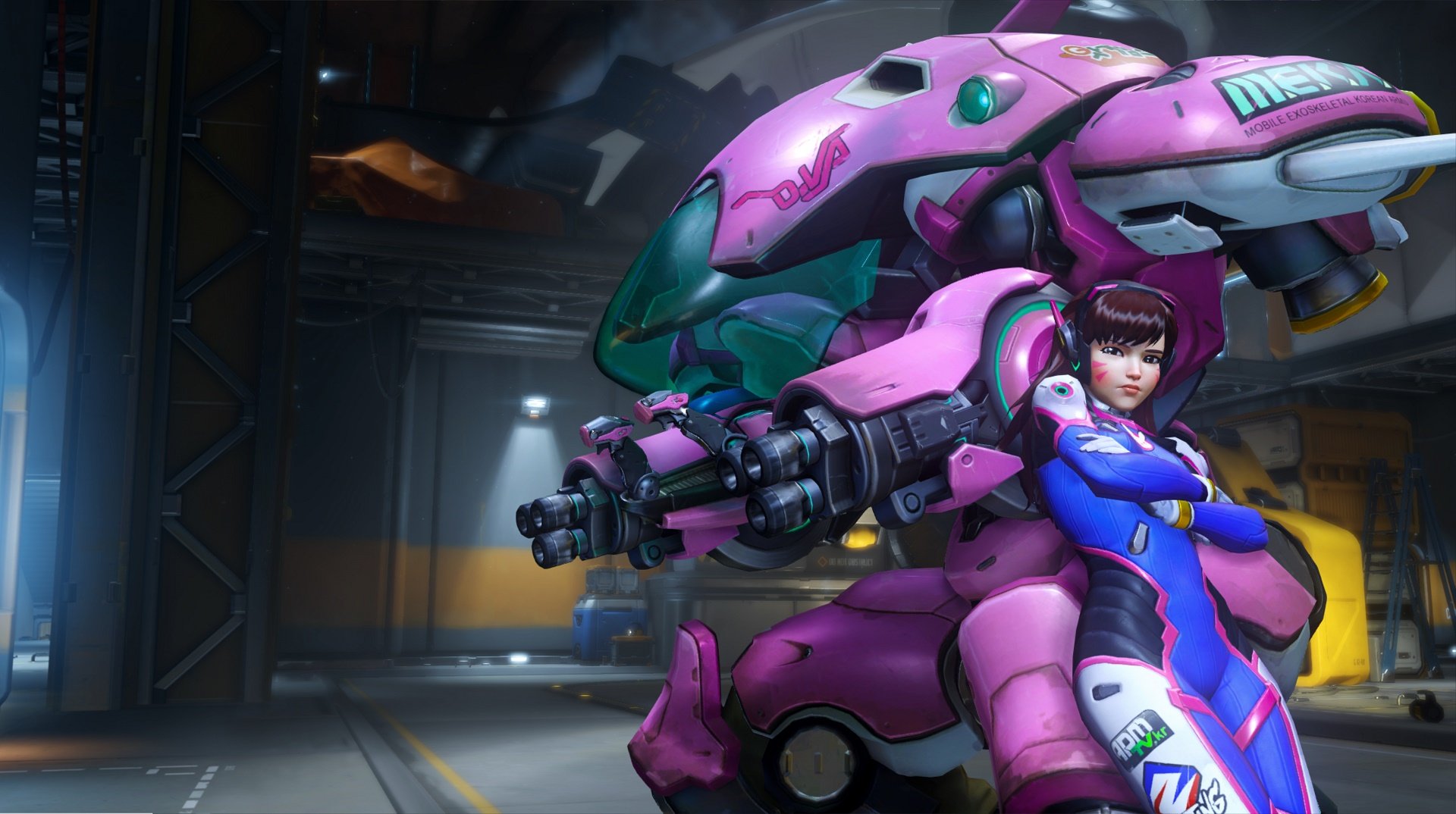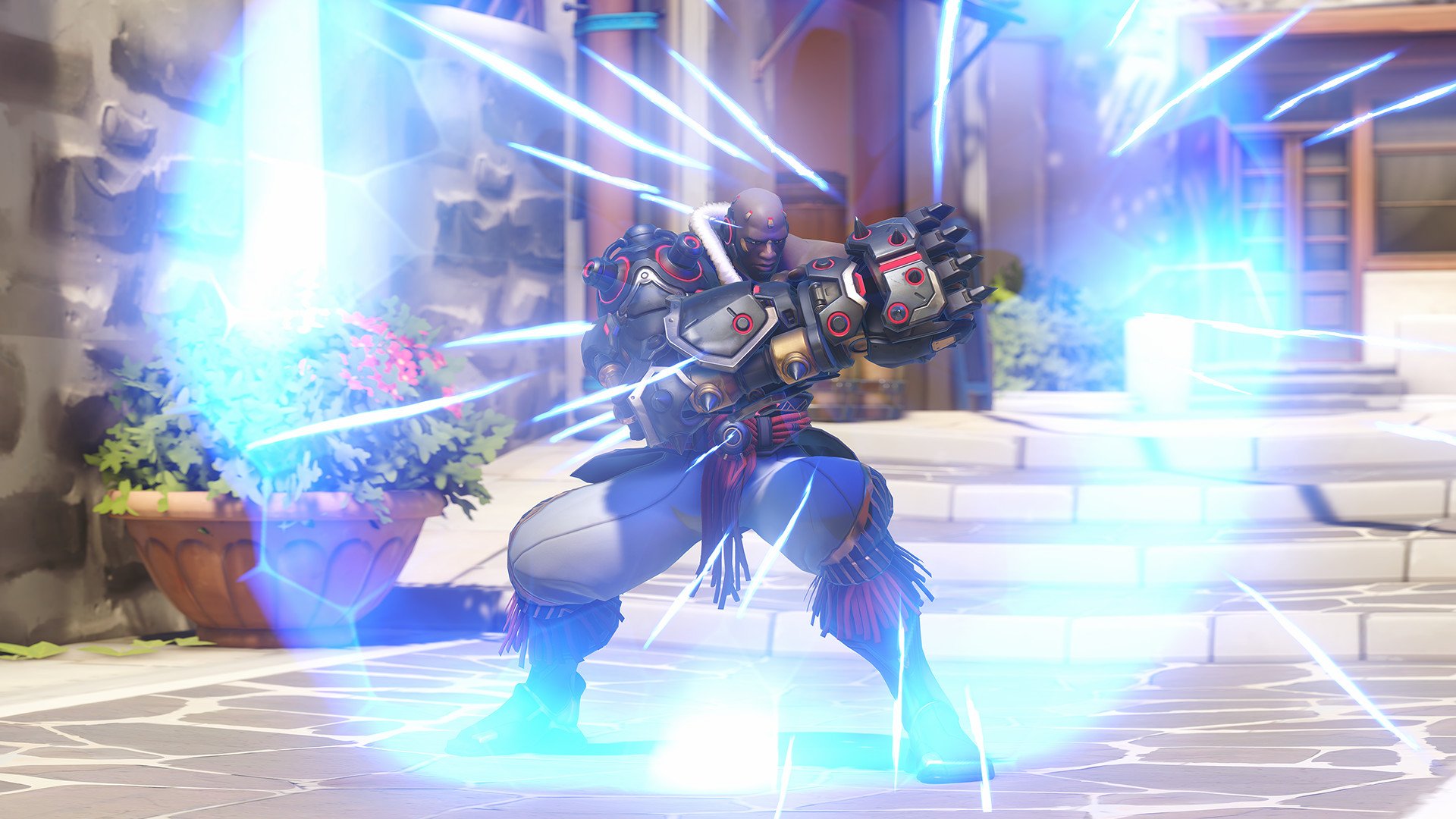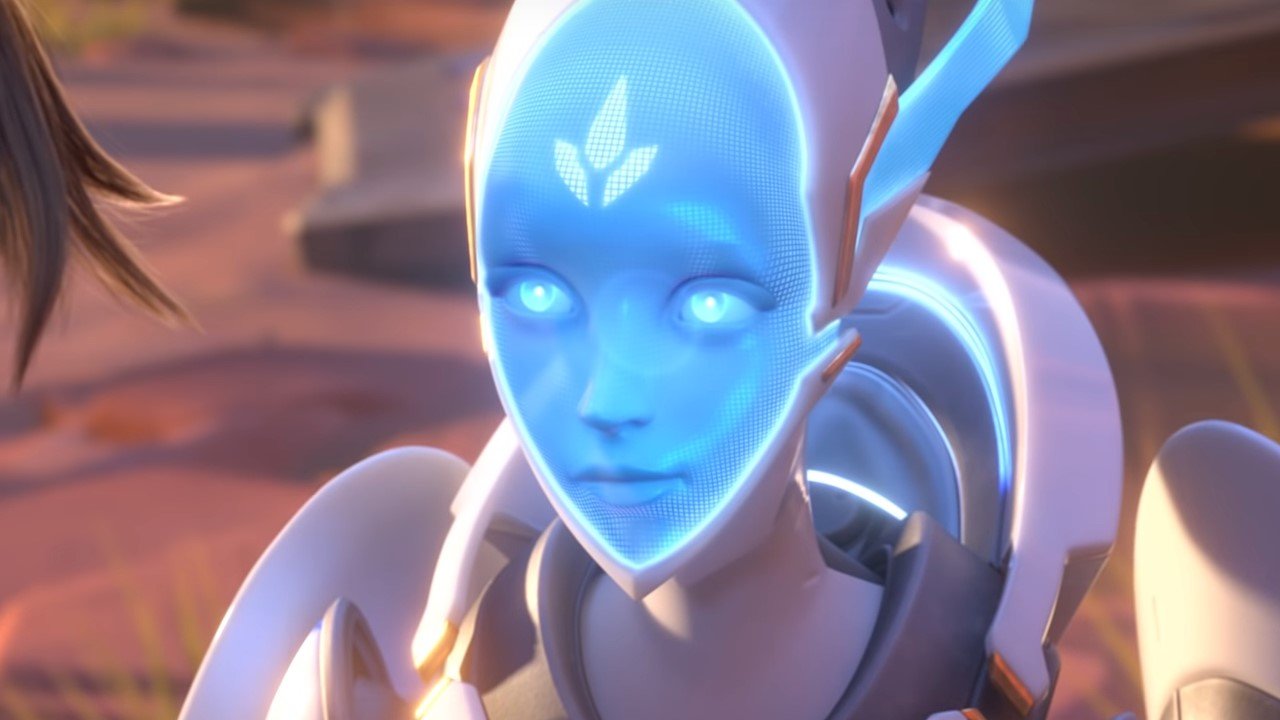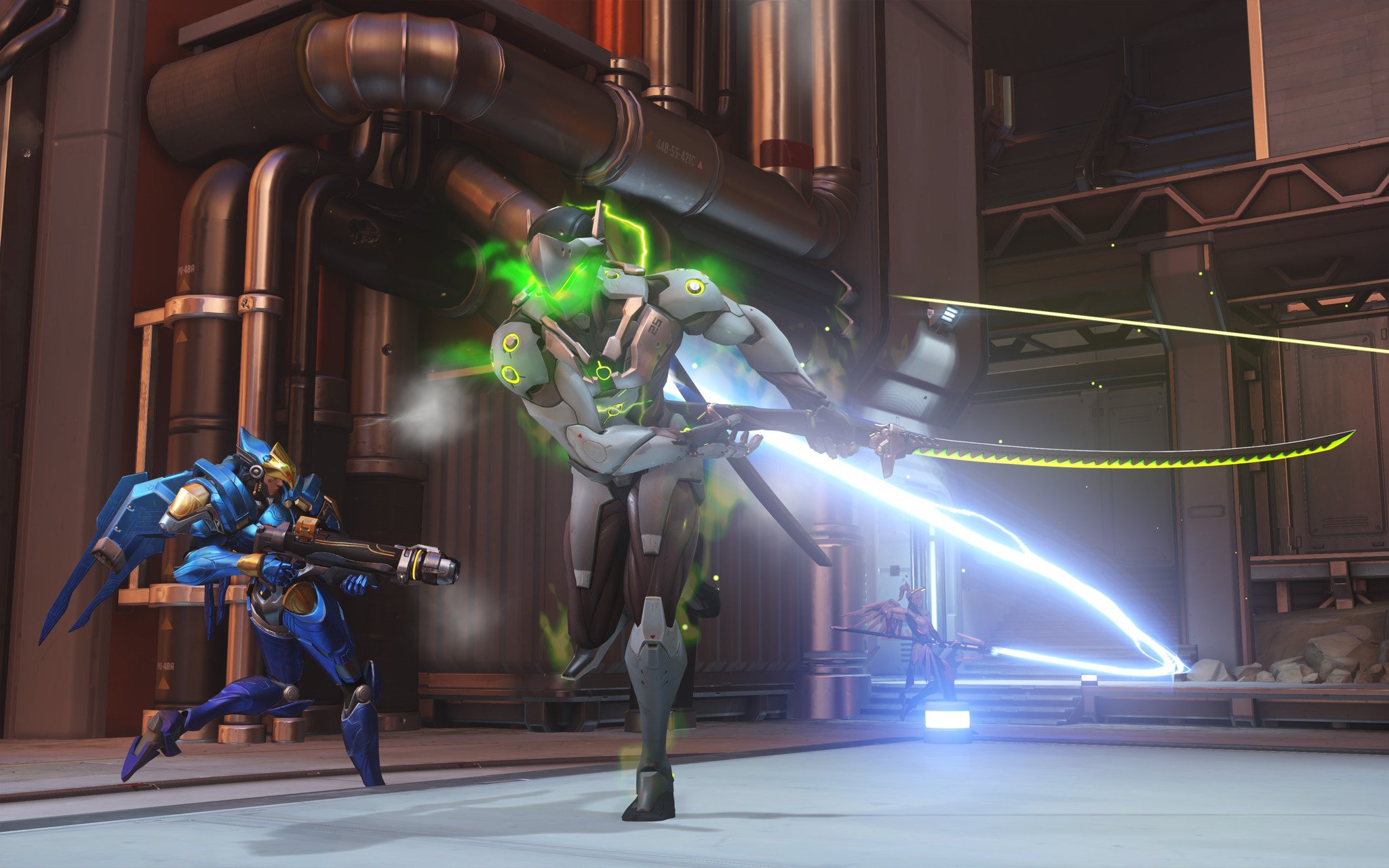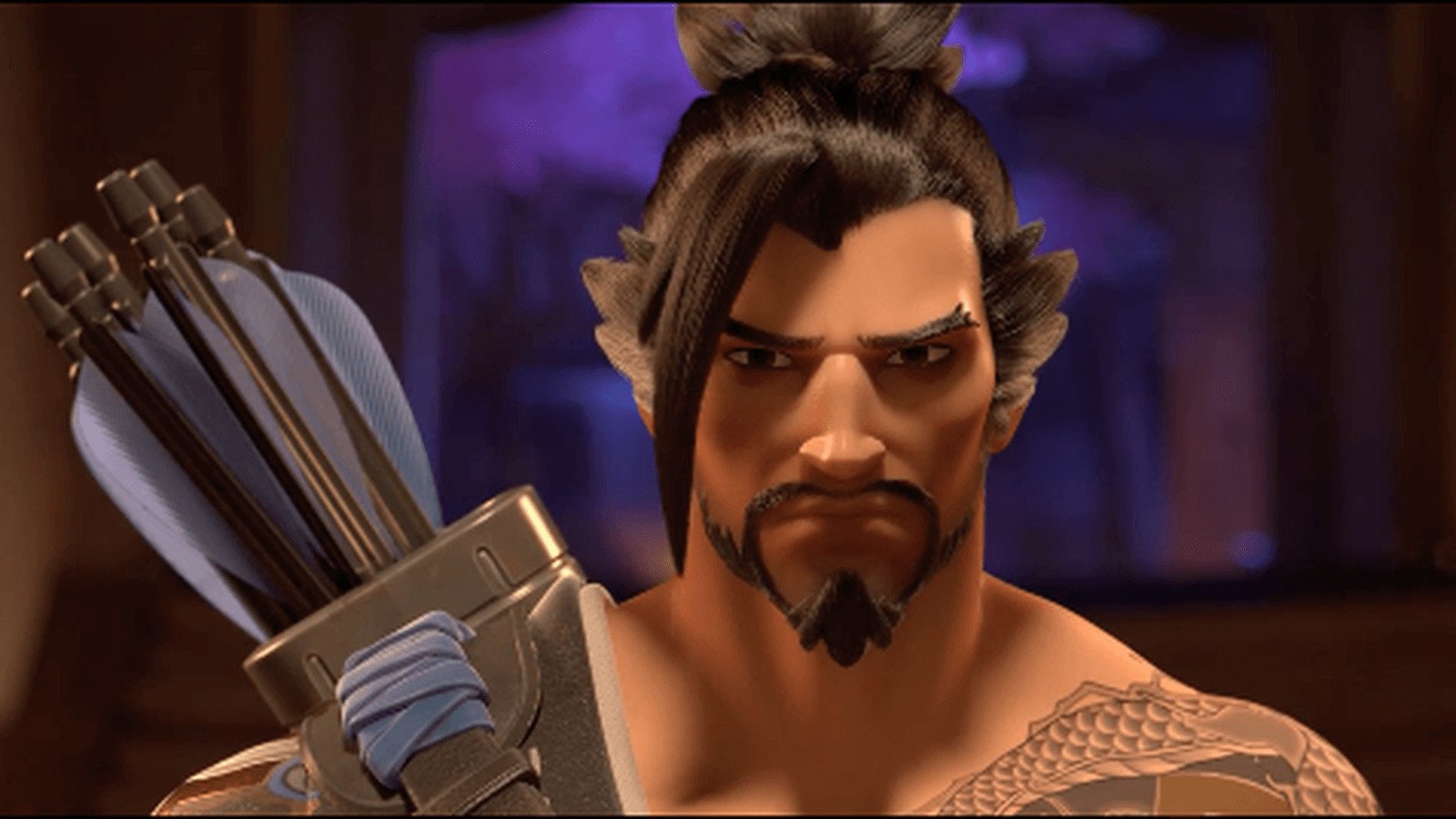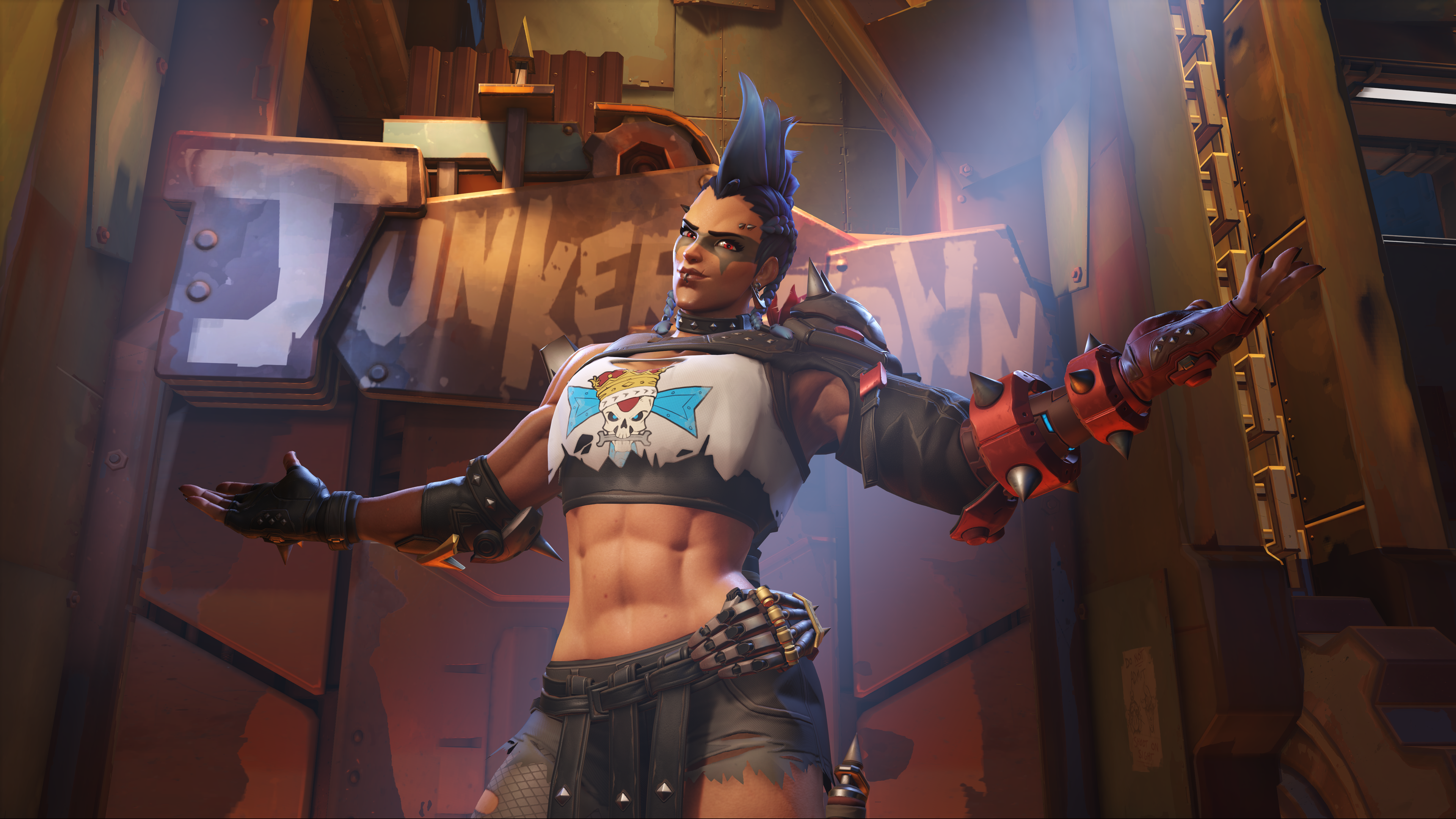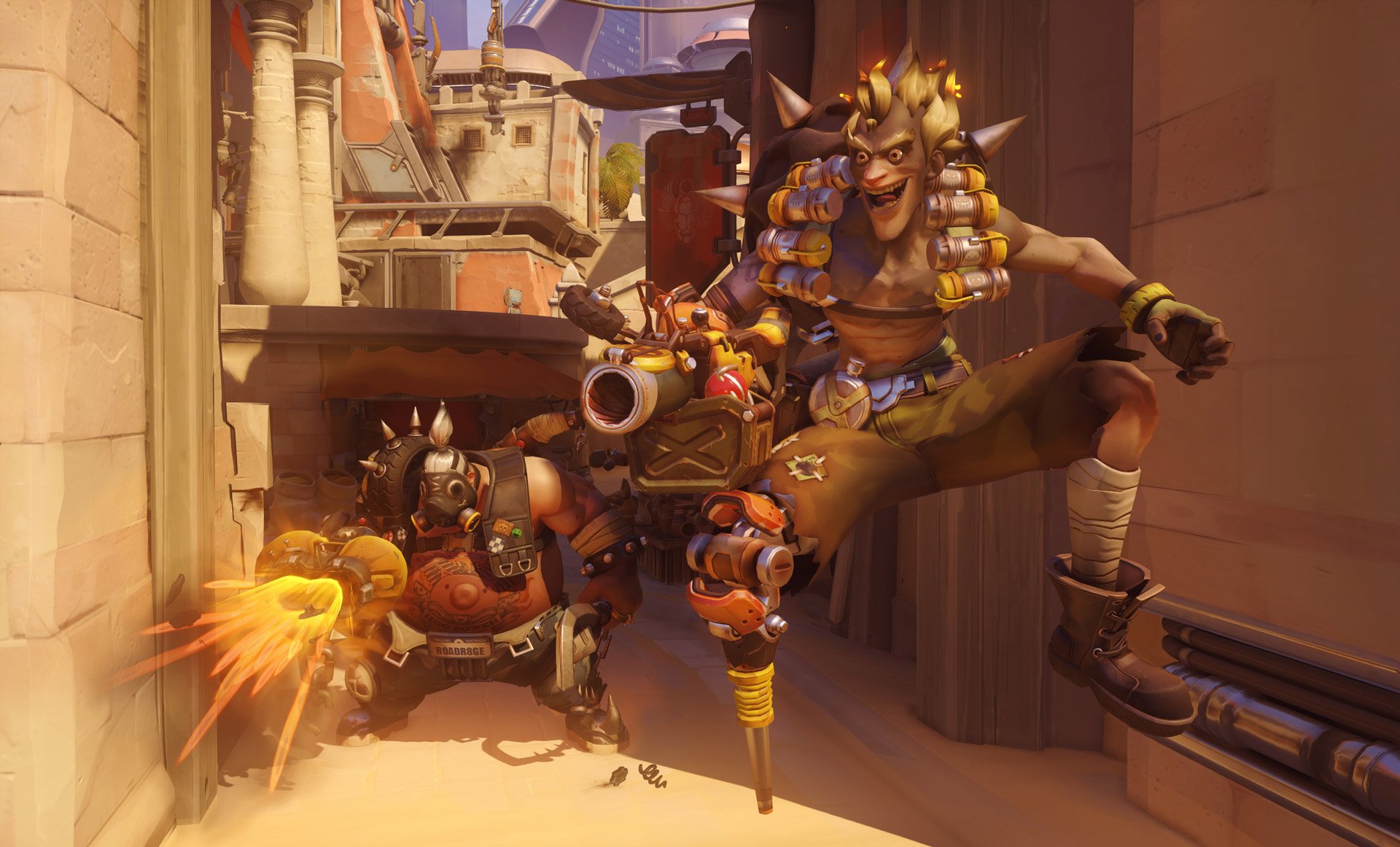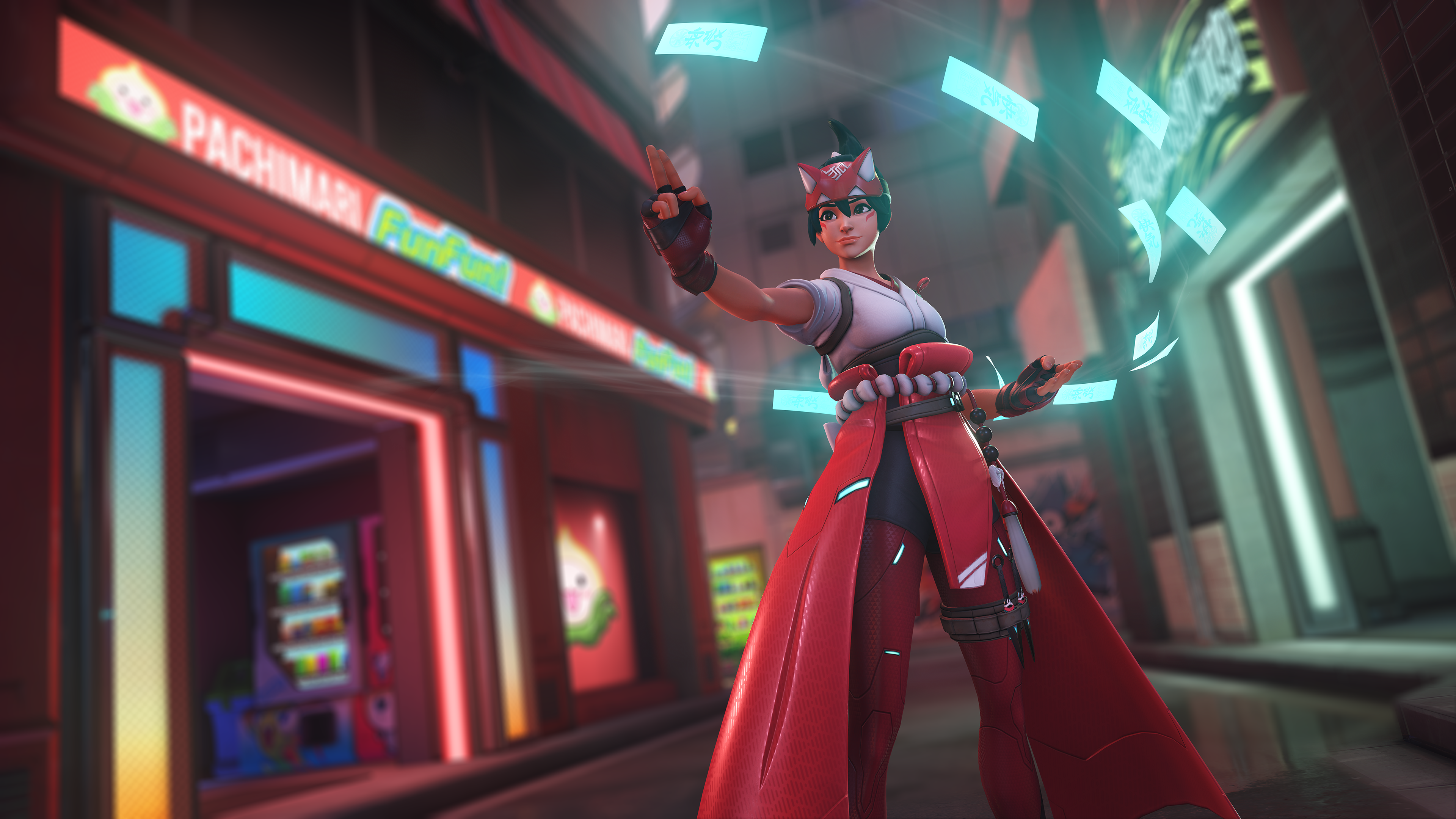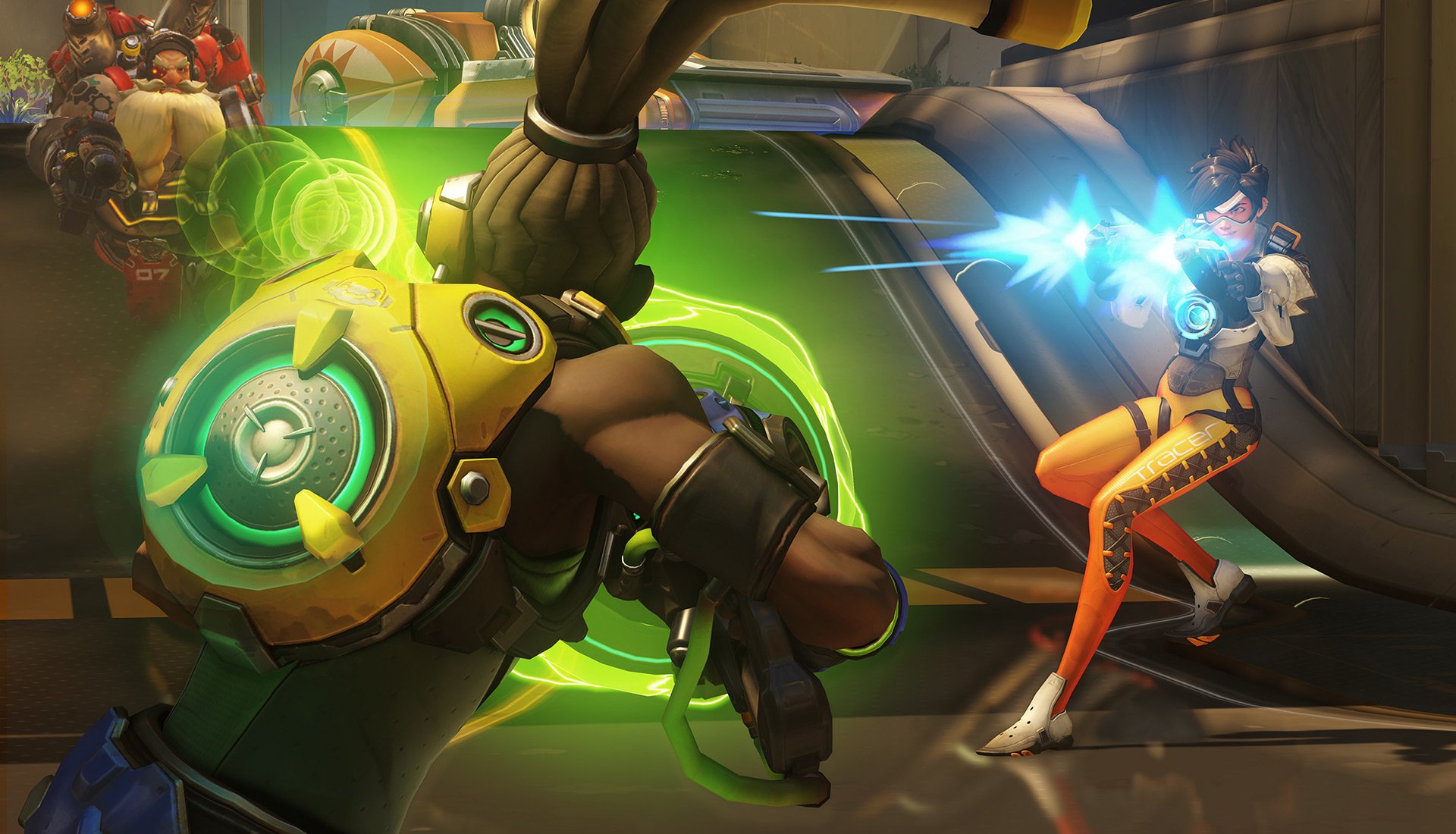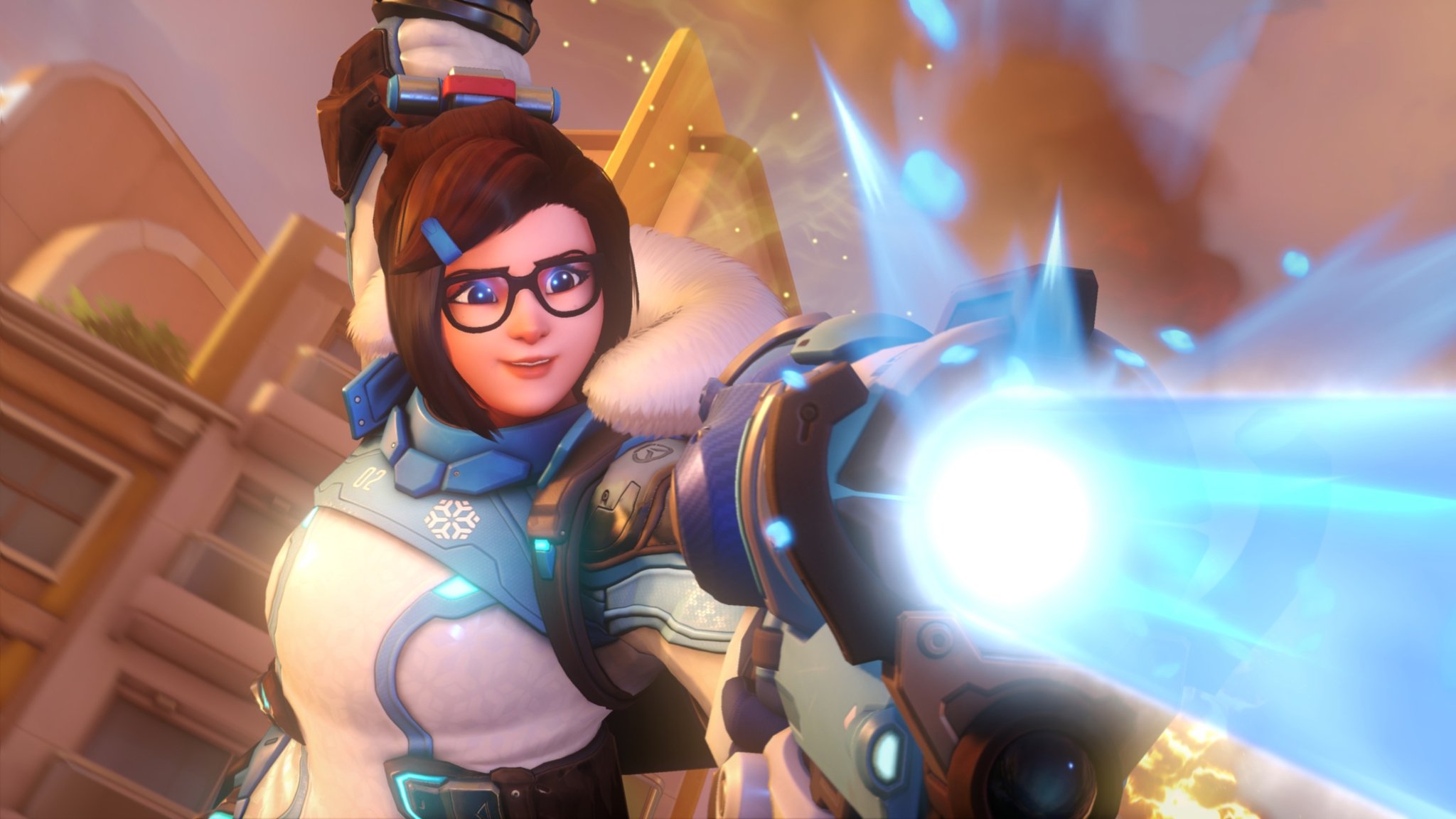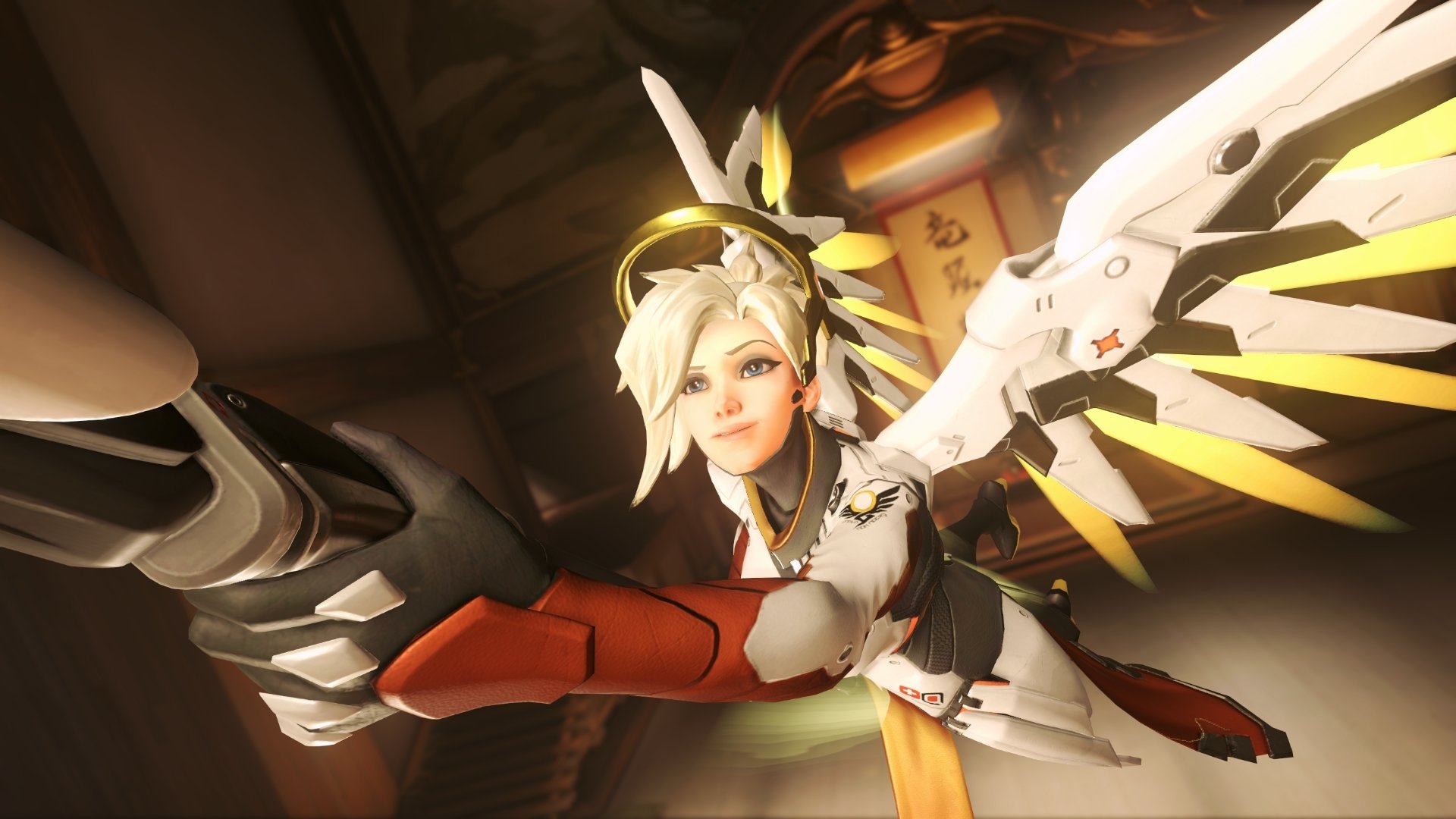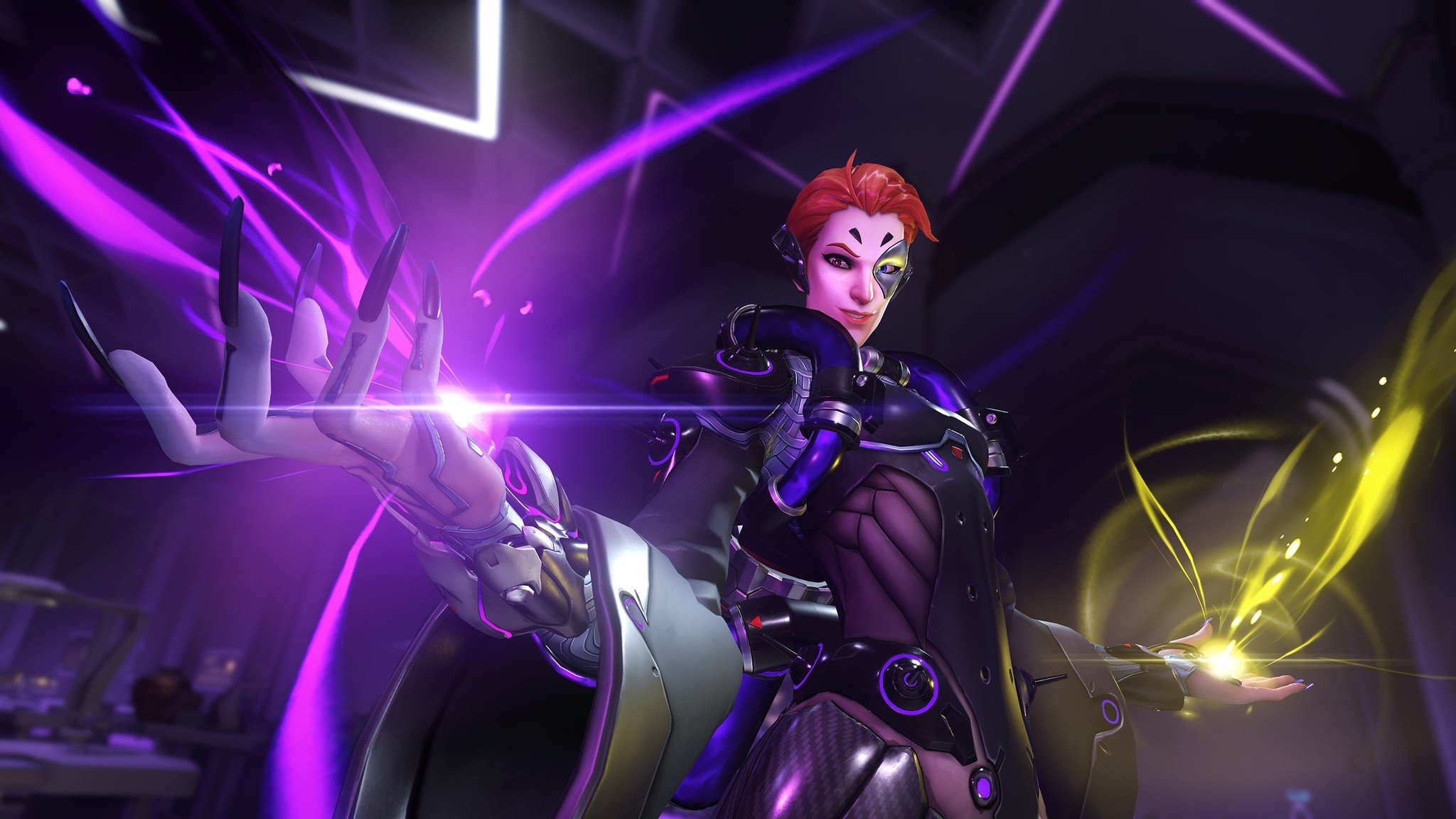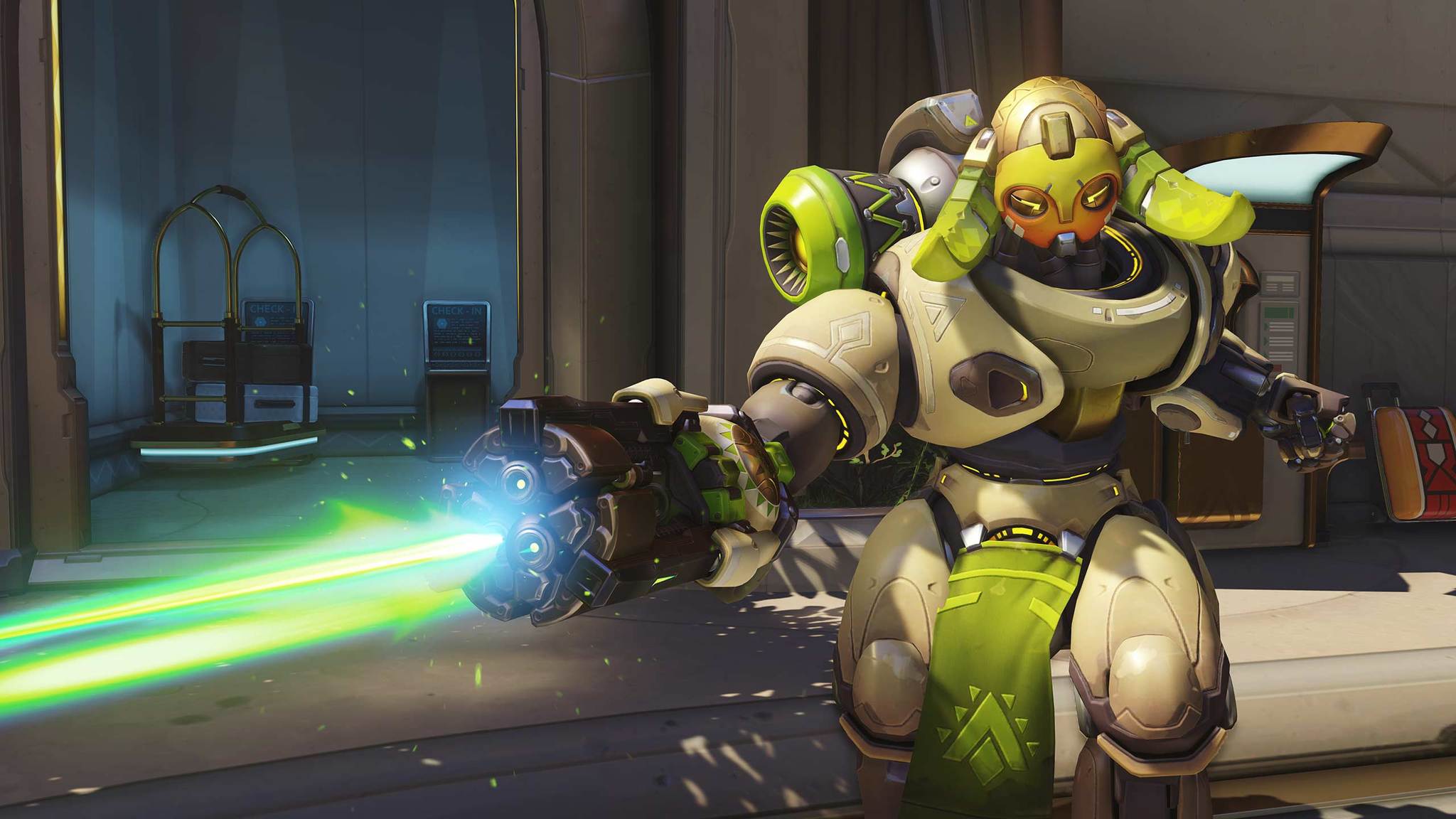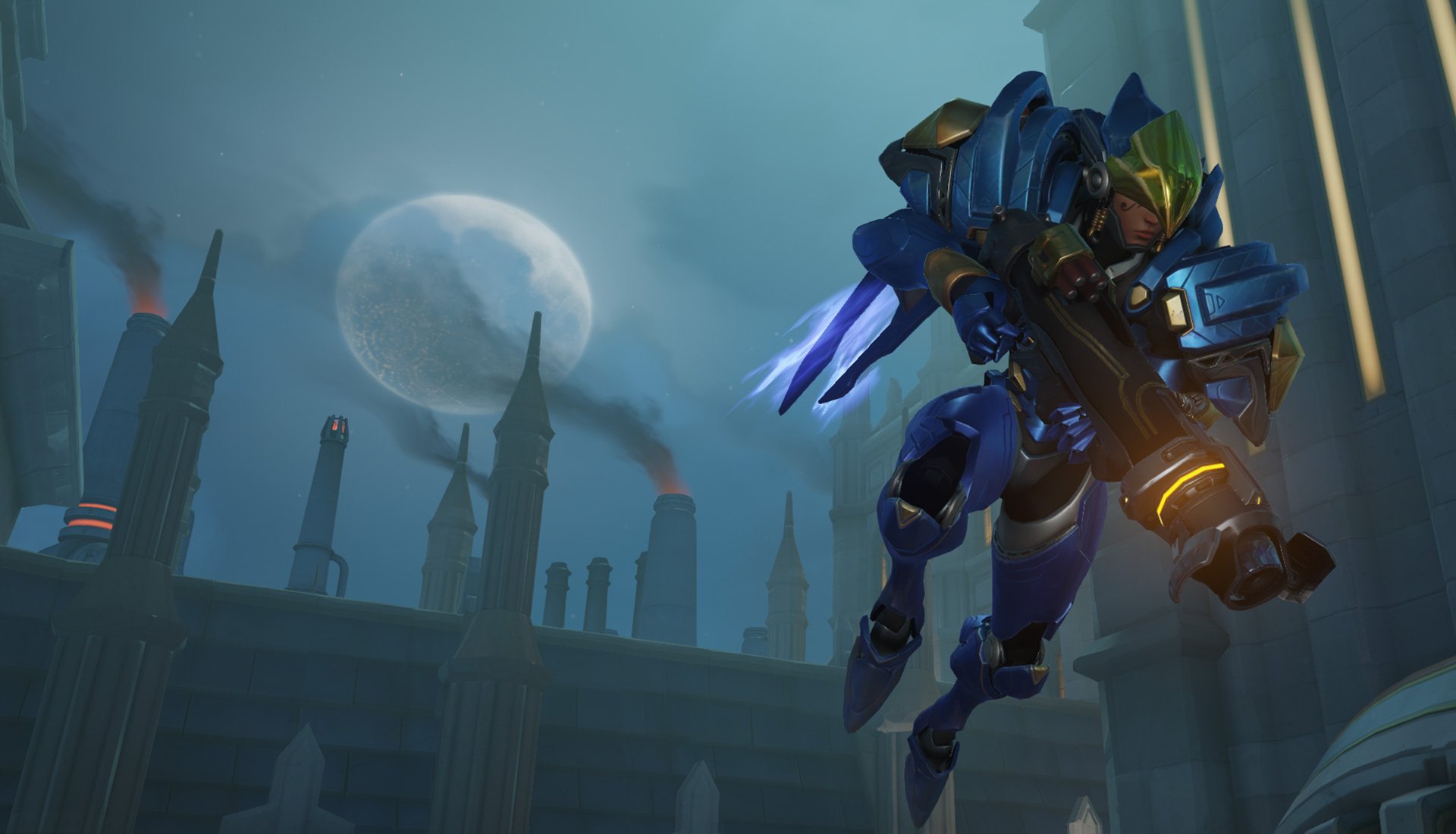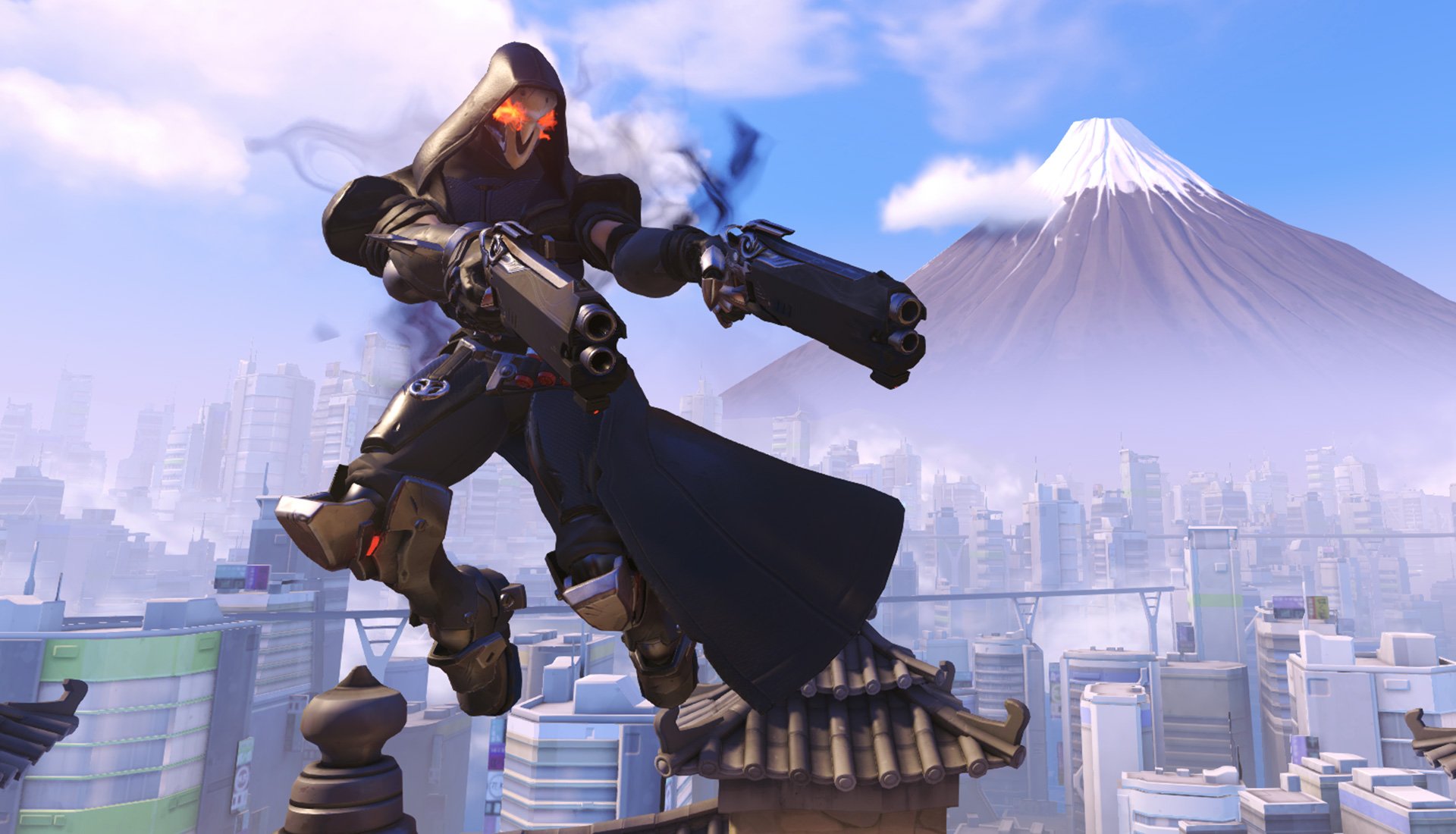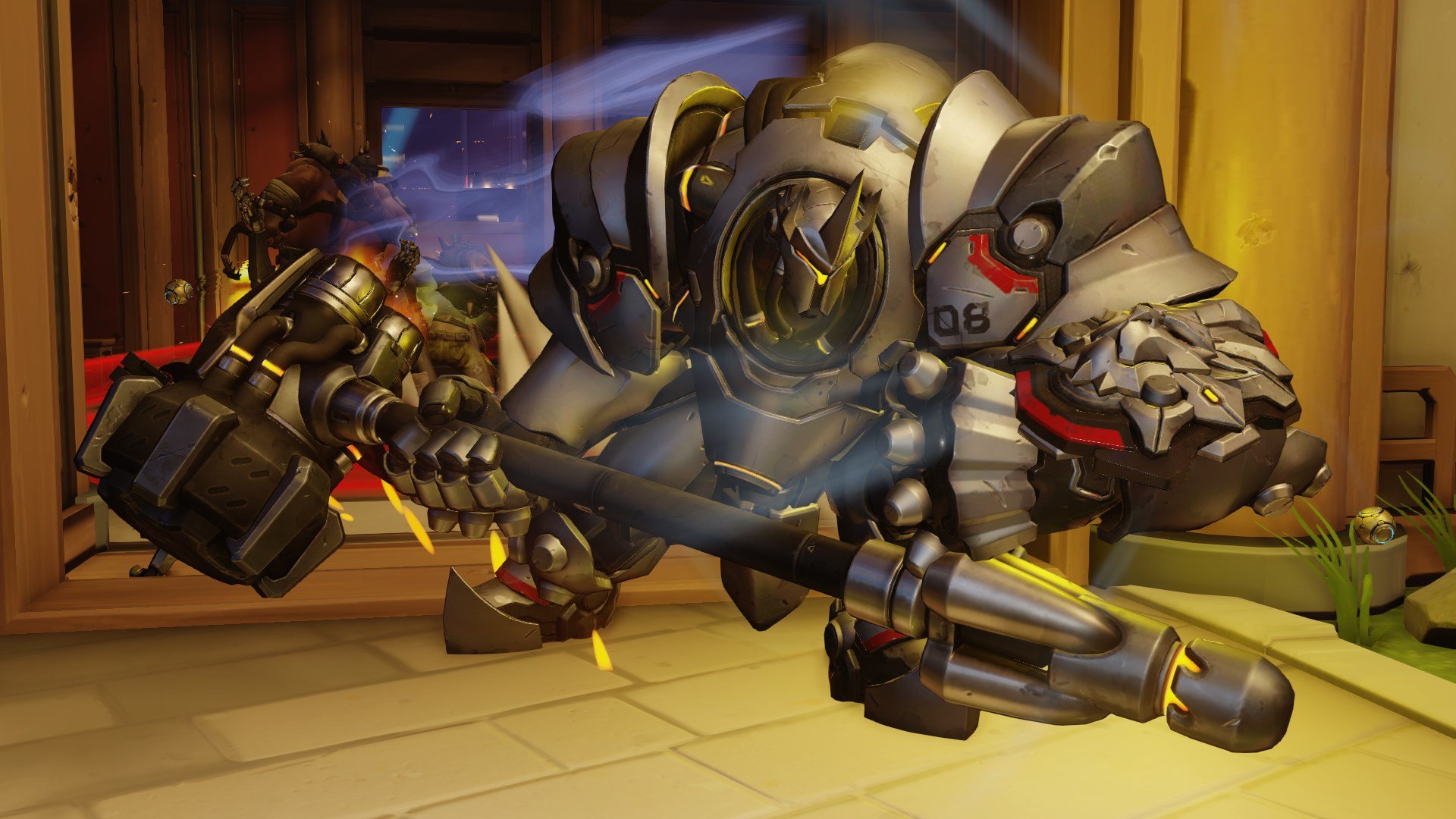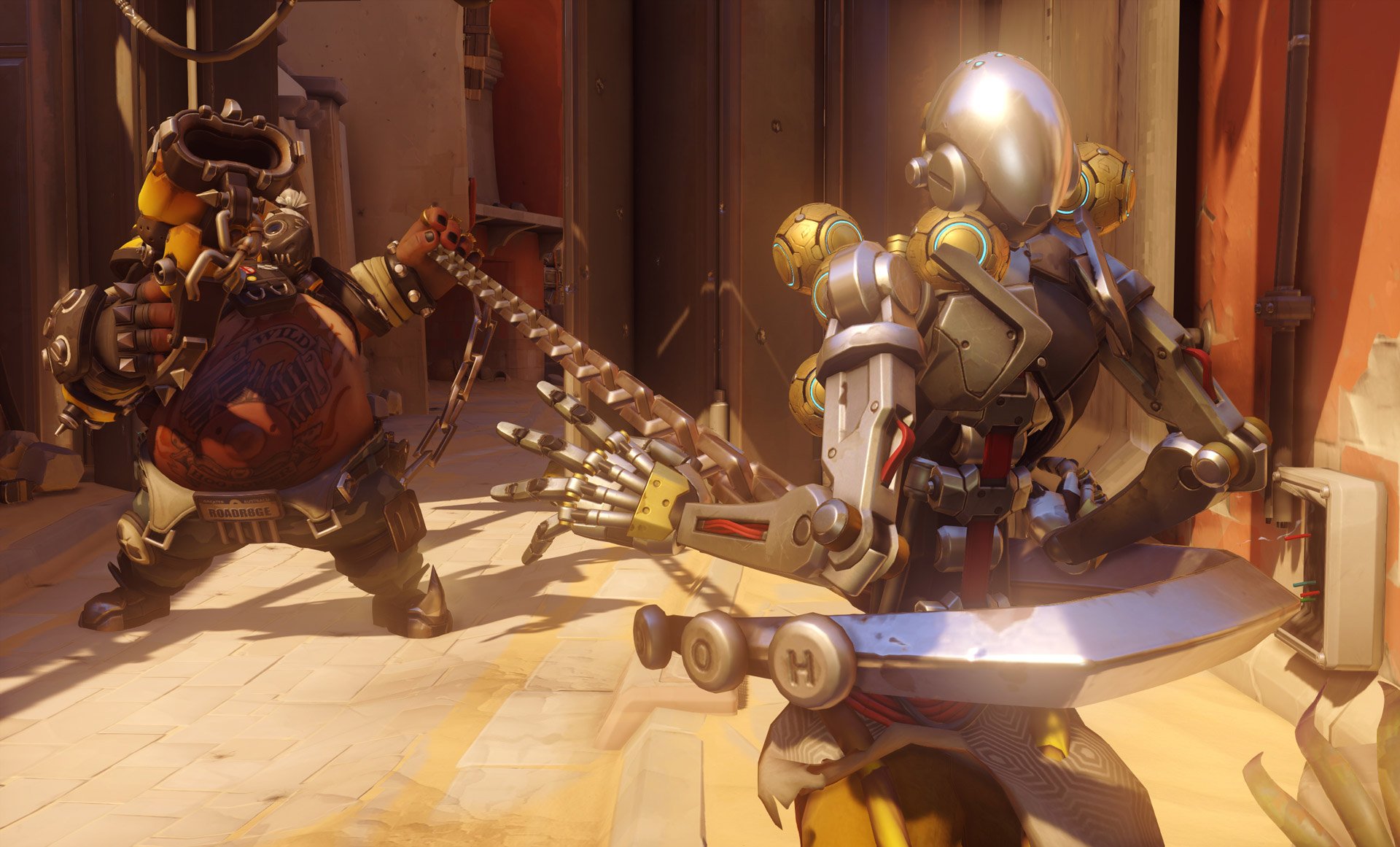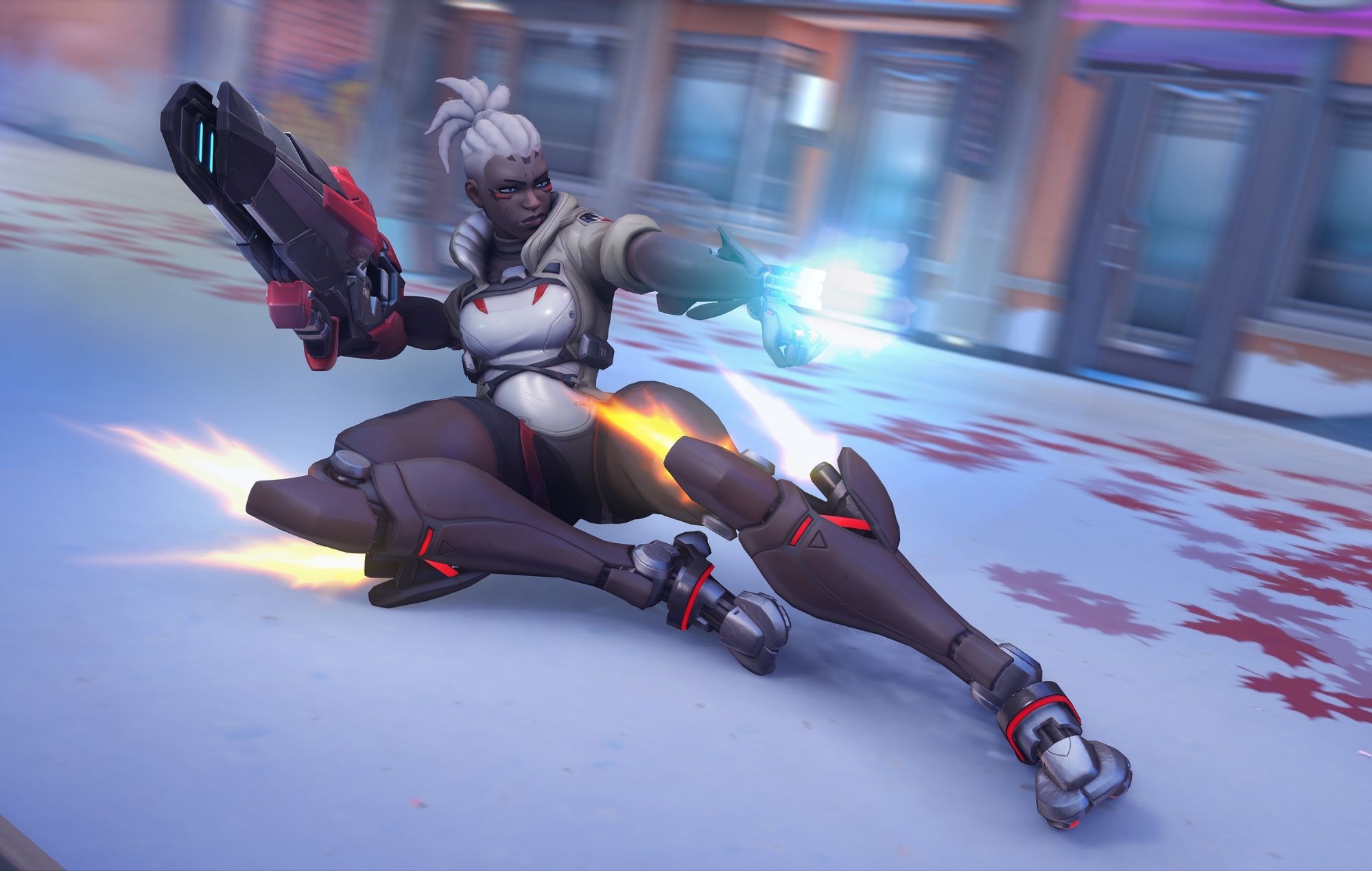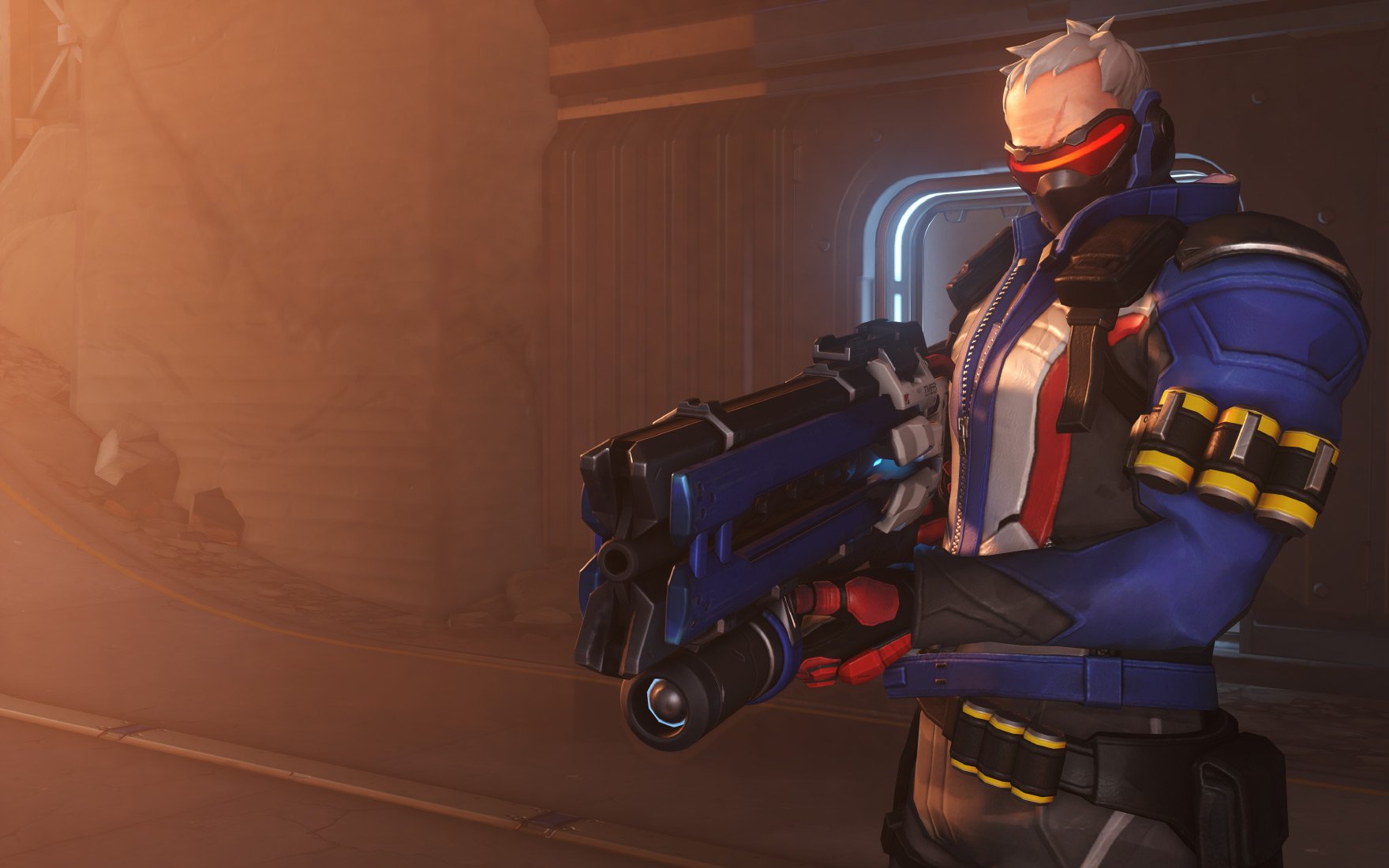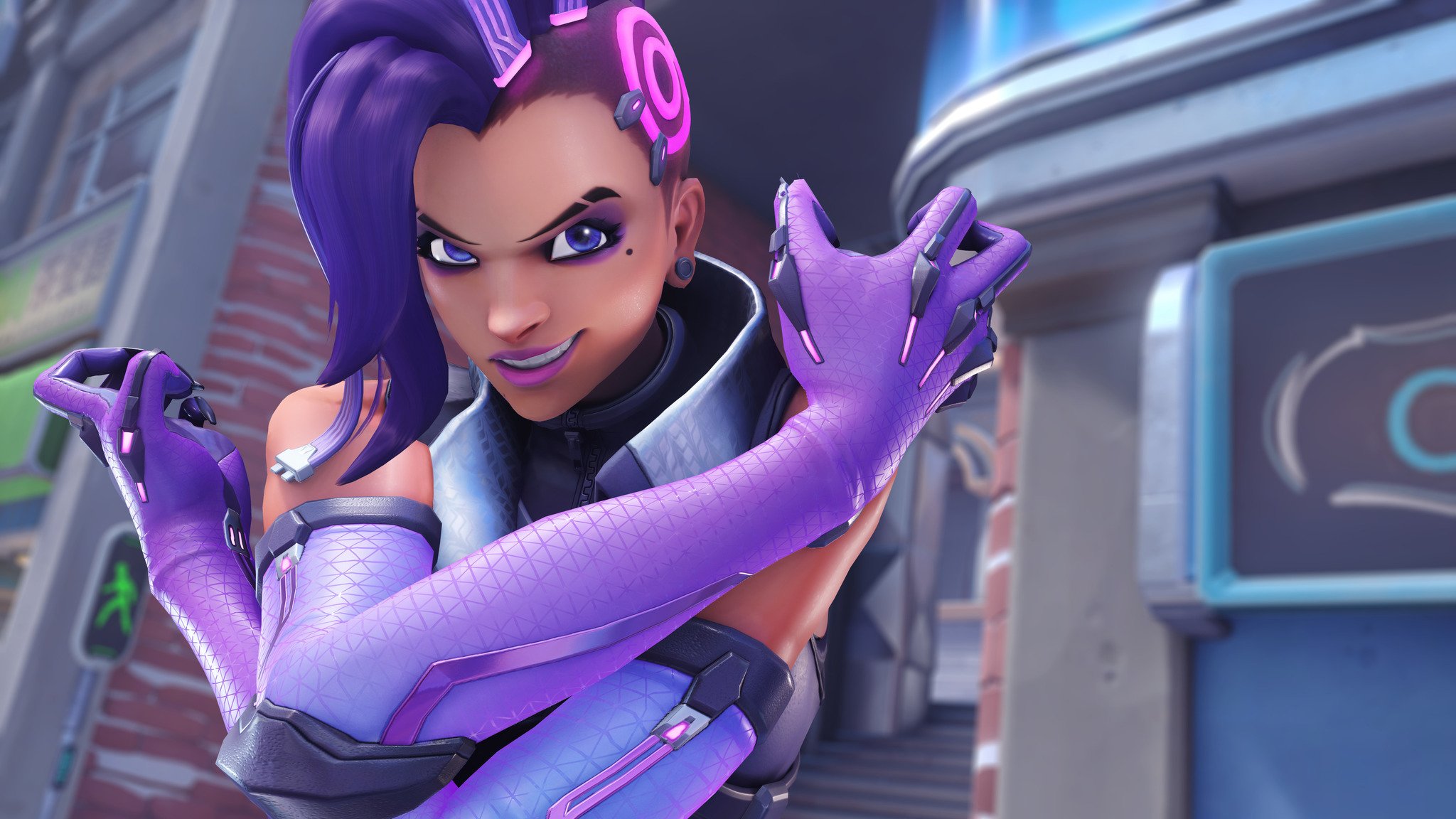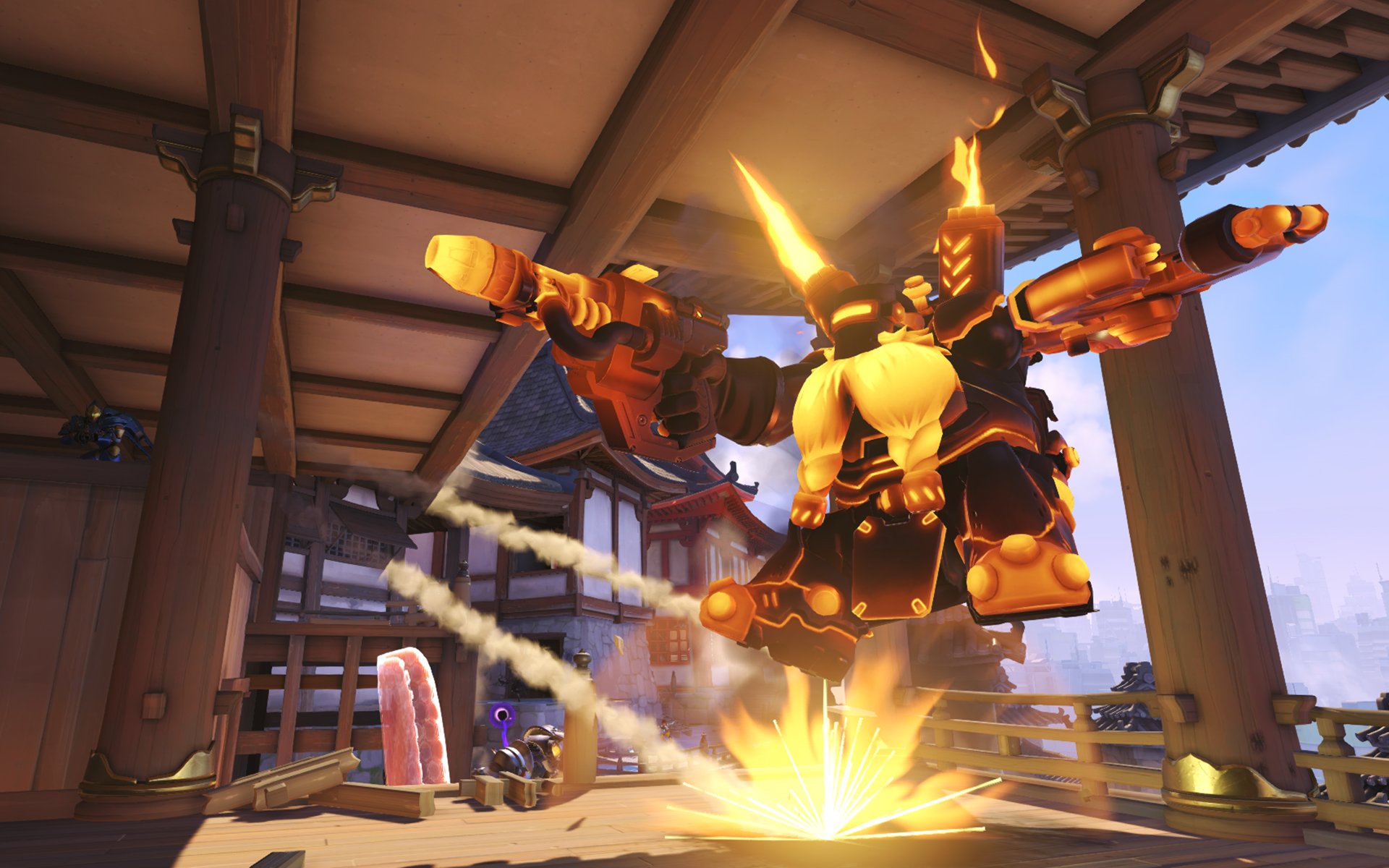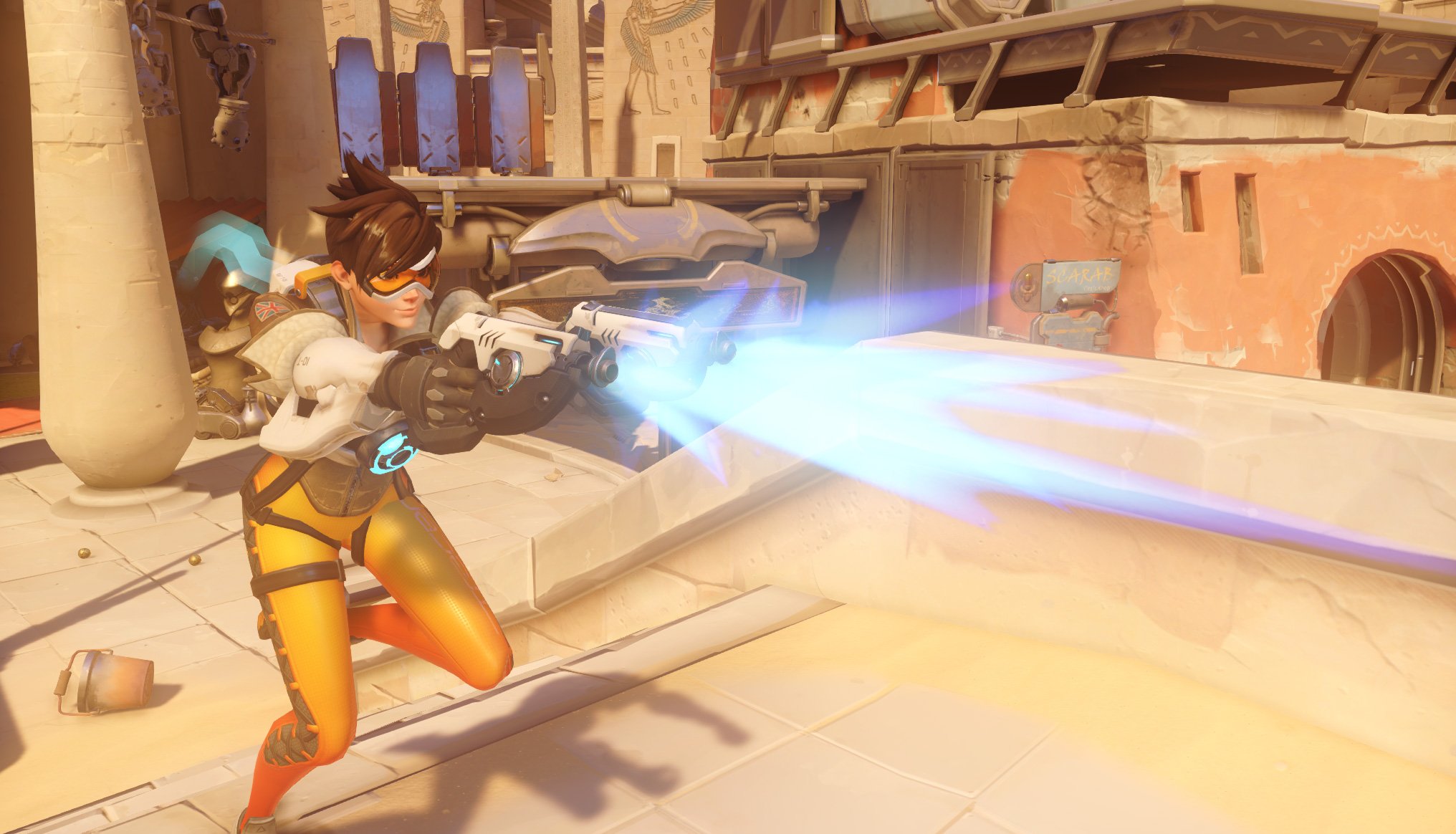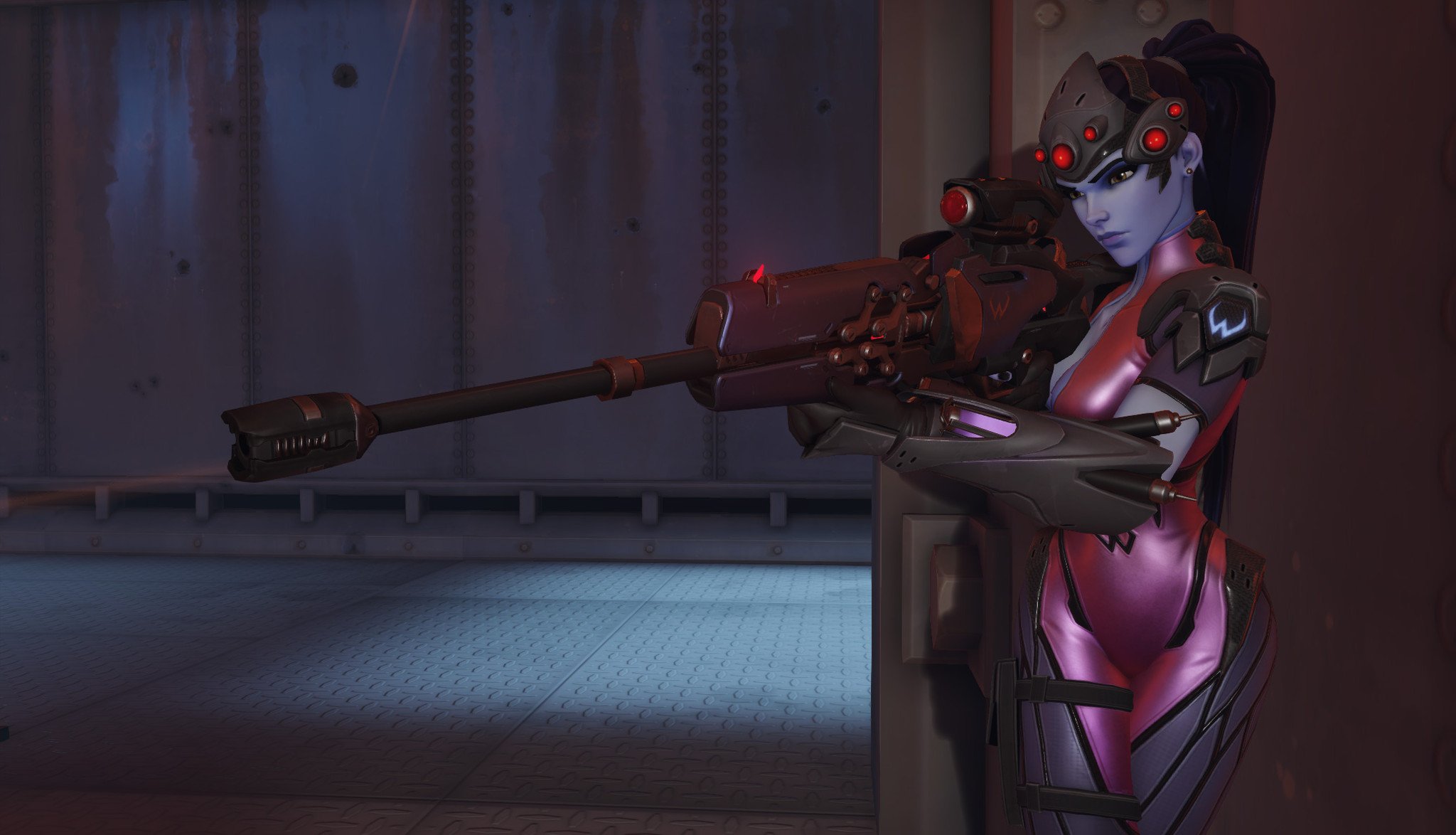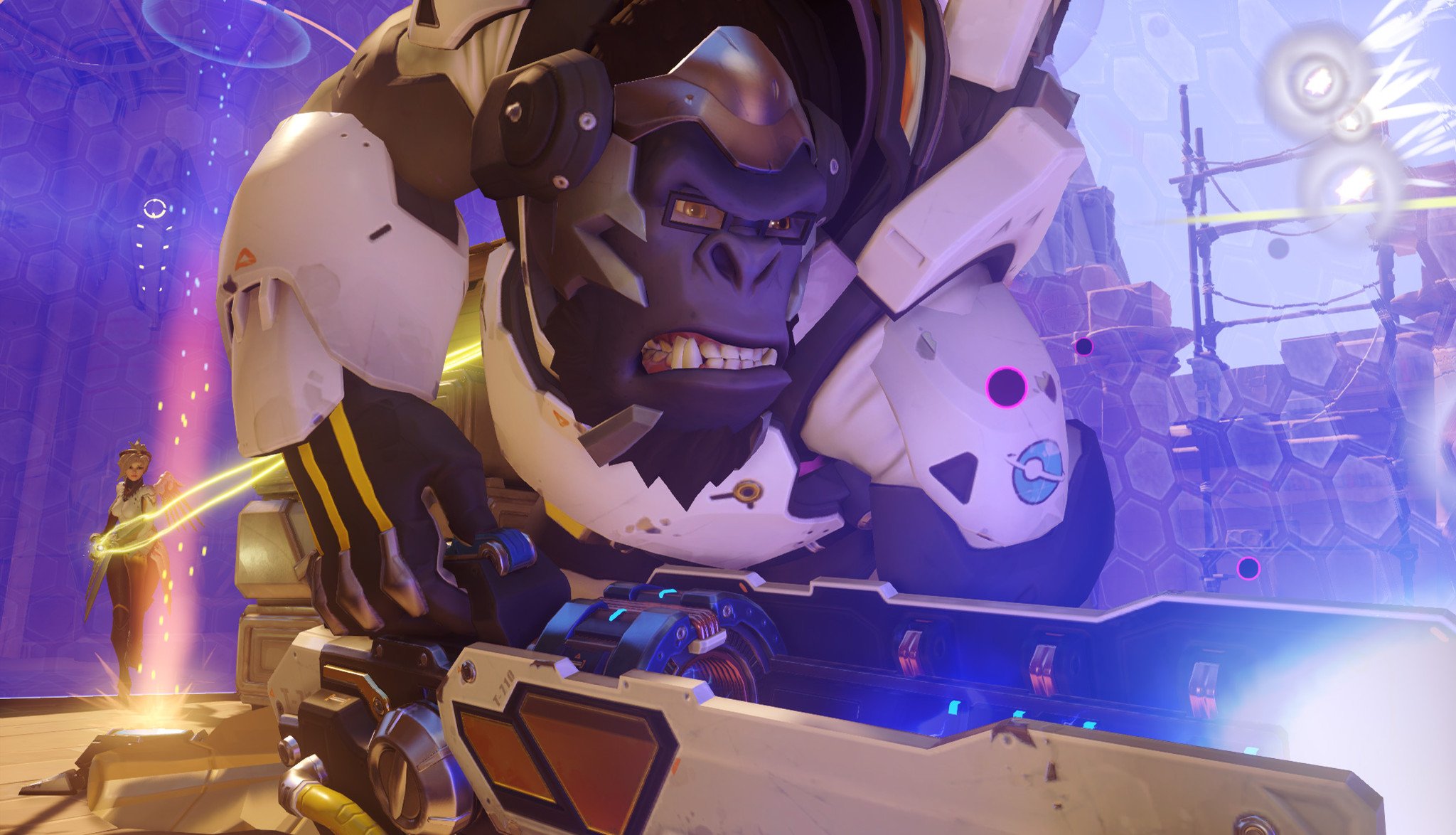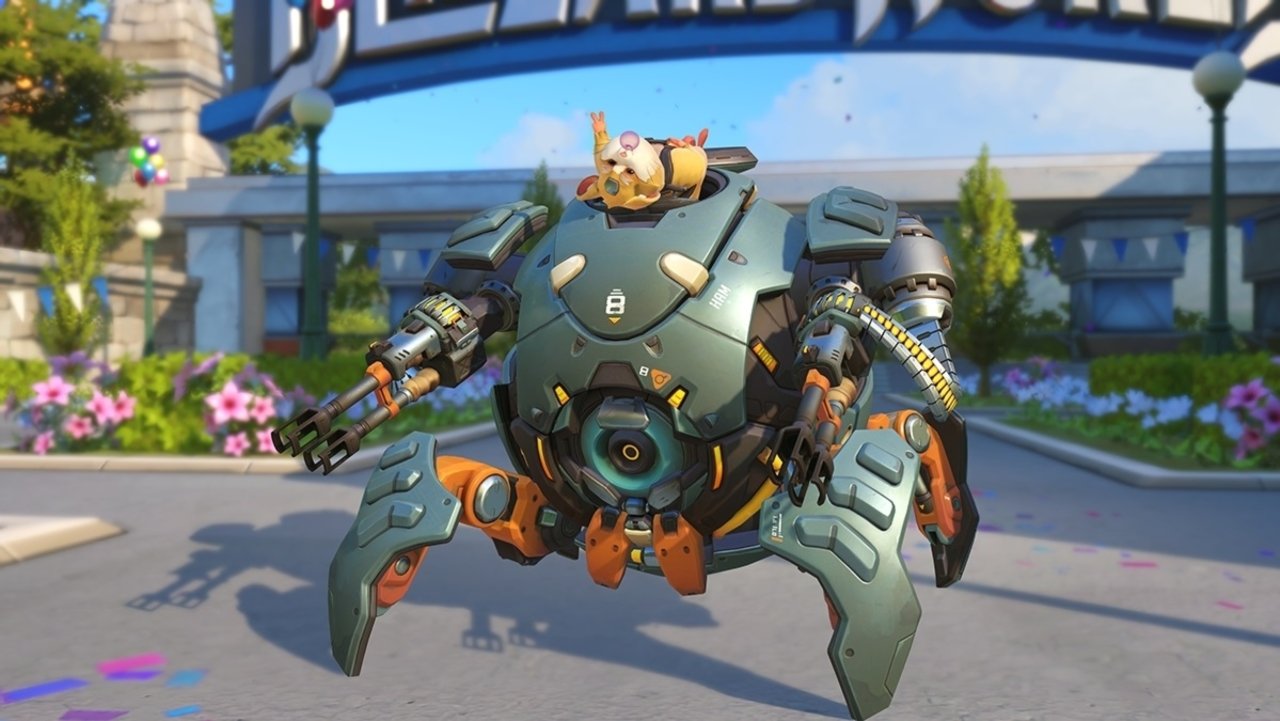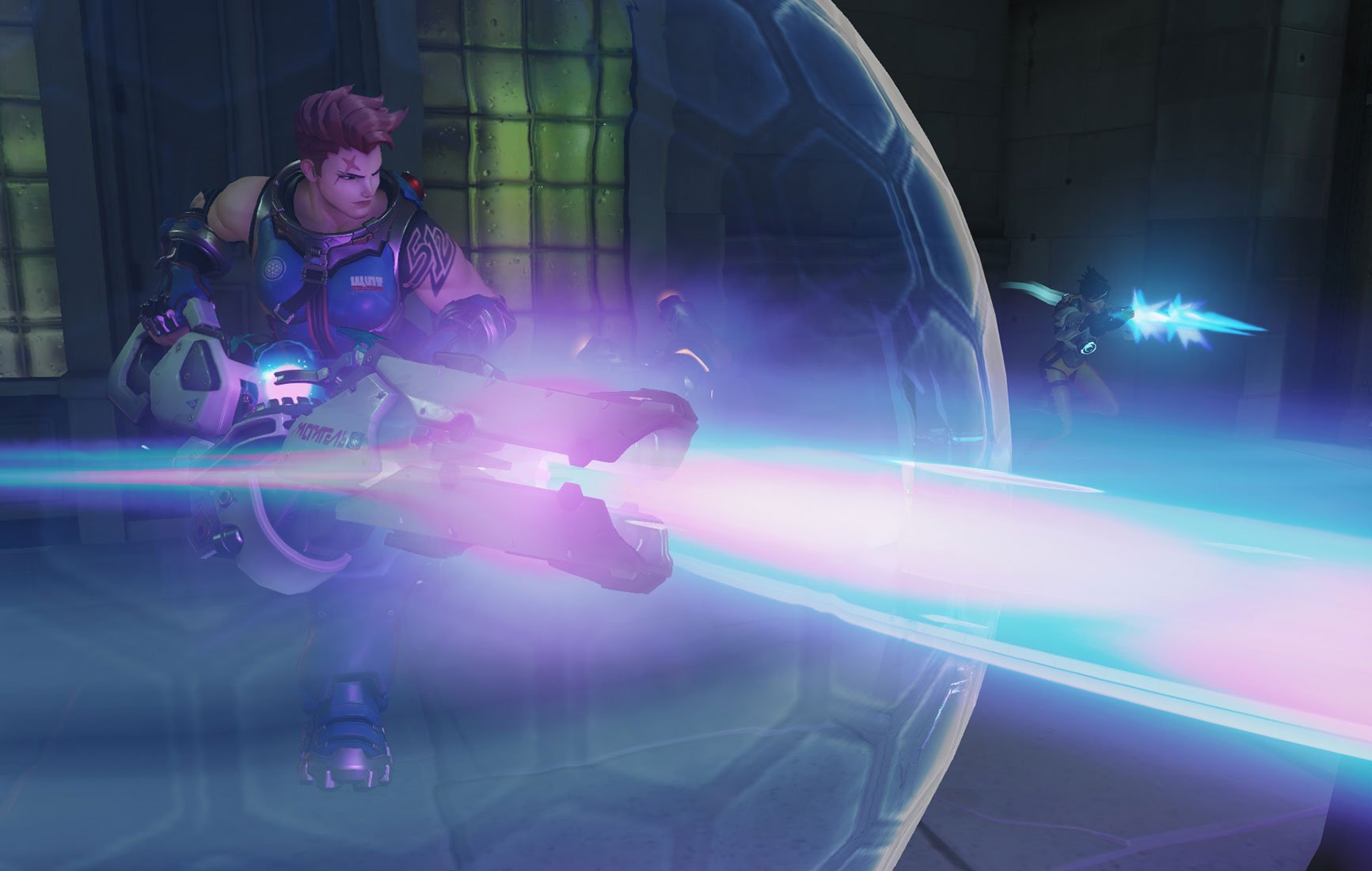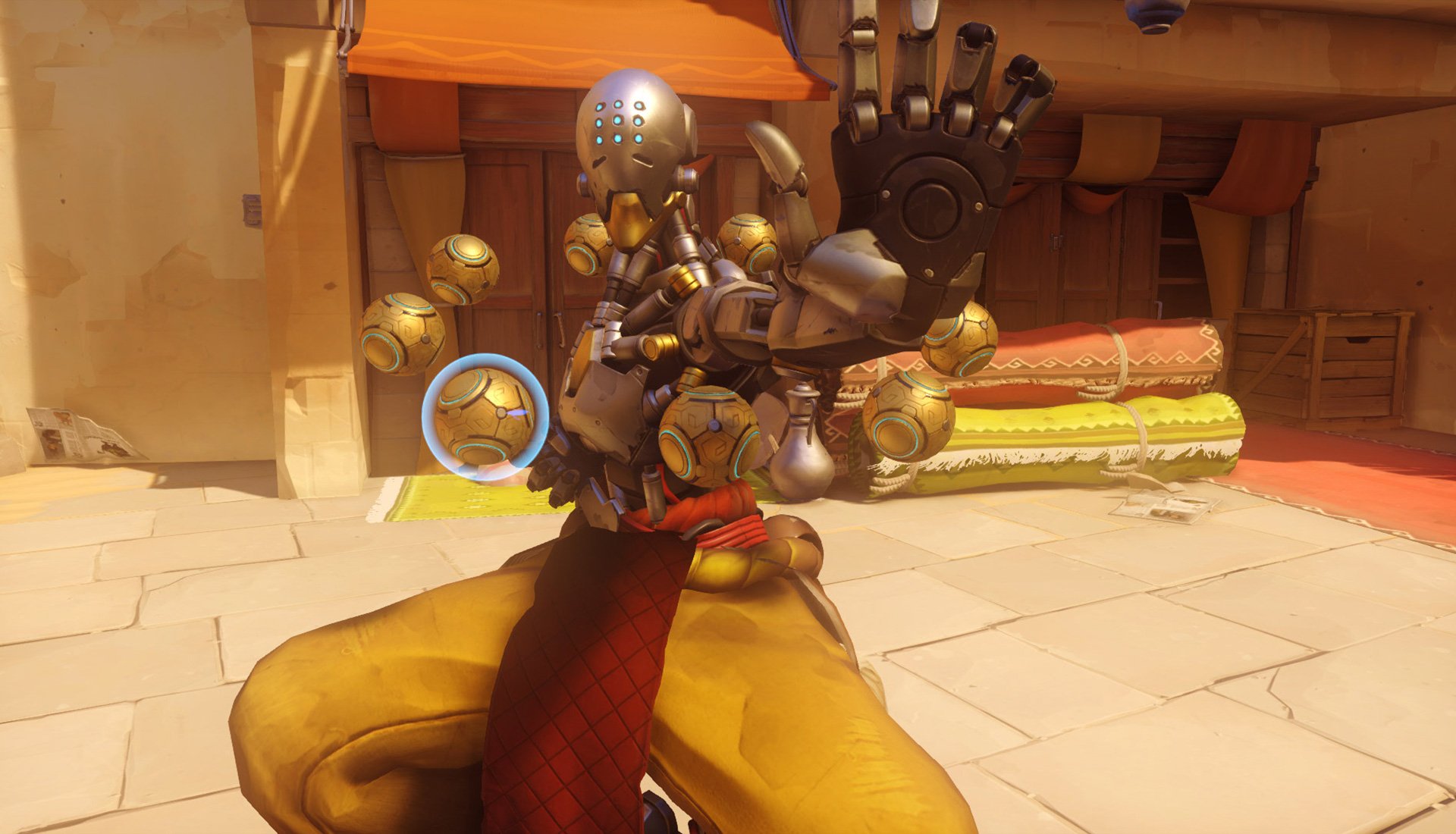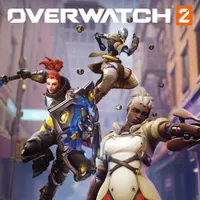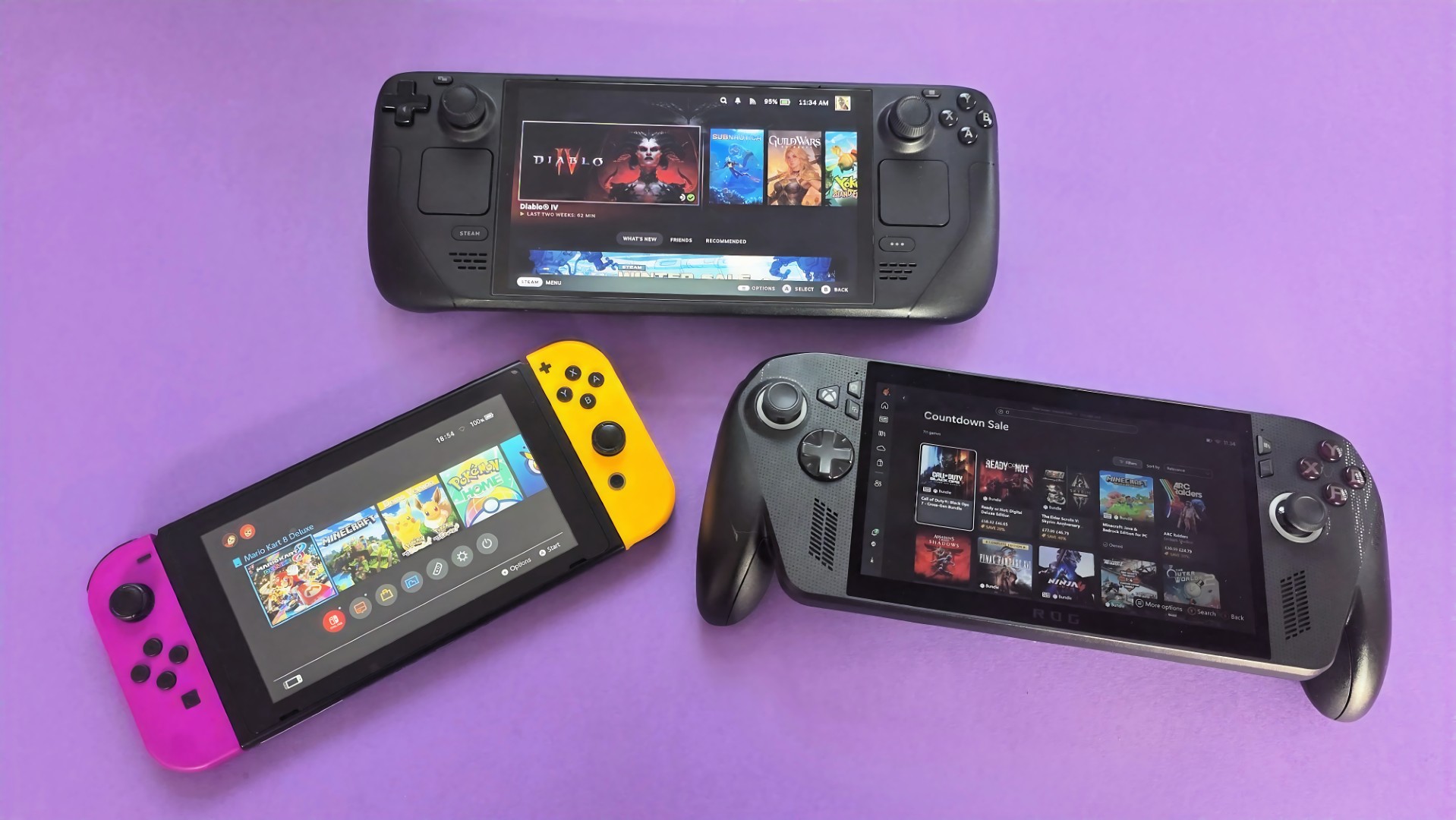Overwatch 2: All hero changes and character reworks
Everything you need to know about Overwatch 2's balance changes.
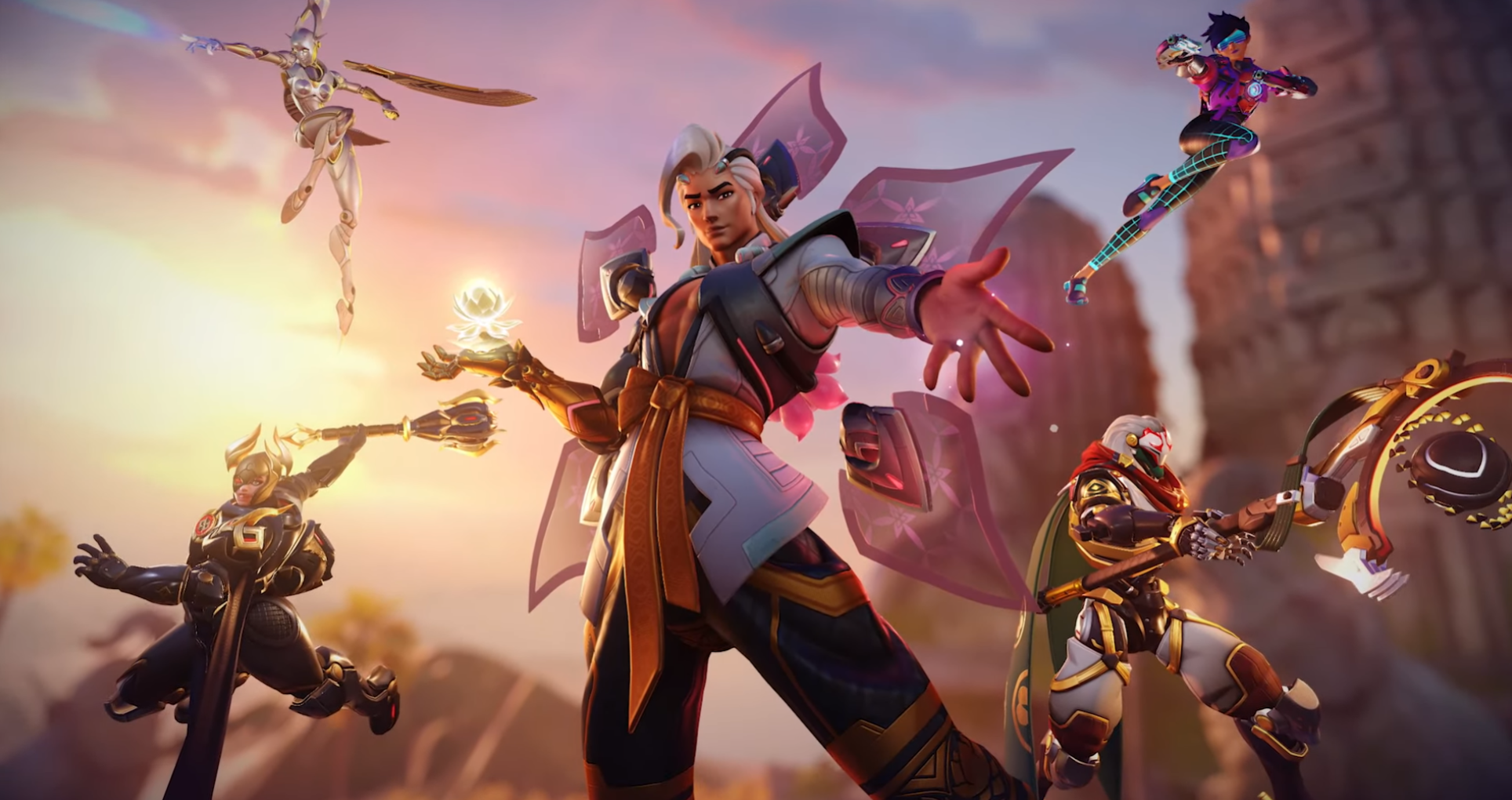
Update 4/6/2023: This list has been updated with the changes coming to Overwatch 2 at the start of Season 4 on April 11.
With the Overwatch 2 era of Blizzard Entertainment's award-winning hero shooter well underway, several large balance tweaks have substantially changed each of the game's heroes. Due to the move to a 5v5 format with one less tank per team, many of the game's heroes needed adjustments to remain balanced and viable. Some heroes got changed more than others, but very few heroes (if any) have remained just like they were in the original Overwatch.
In addition to all of the tweaks that came with Overwatch 2's launch, plenty of adjustments have been made throughout the game's seasons as well. In fact, Season 3 and the upcoming Season 4 have introduced some of the largest and most transformative changes that the game has seen so far. On top of that, the developers have also deployed several mid-season updates in situations where certain characters are considerably over or underpowered.
To help you keep track of everything, we'll catalog all of Overwatch 2's hero changes and reworks here. On top of that, we'll also go over how each hero fits into Overwatch's metagame and what you need to know about their strengths and weaknesses. Keep in mind that all of the changes listed below are subject to change, as the developers will no doubt make future adjustments based on player feedback and other data.
Global changes
These changes have been made globally to all heroes and hero abilities.
- Maximum ultimate charge retained when swapping heroes reduced from 30 to 25%.
- All damage heroes now gain a 35% reload speed buff for 2.5 seconds whenever they eliminate an enemy player. Does not stack, but will refresh if additional eliminations are scored while active.
- All tanks now have 30% knockback resistance and provide 50% less Ultimate charge when damaged.
- All supports now heal 15 HP/second after not being damaged for 1.5 seconds.
- All forms of extra health from abilities (e.g., Brigitte's Rally or Lucio's Sound Barrier) are considered Overhealth (green health bar) instead of a secondary type of armor or shield health.
- Overhealth reduces Ultimate charge gained by opponents by 50% when it's damaged.
- Armor health now reduces all damage by 30% instead of flatly reducing it by 5 points.
- The last attack that fully depletes a hero's armor will have its damage reduced by that armor dynamically, with higher damage attacks being reduced less.
- The health totals for all tank heroes will be lower when playing any game mode that does not have a role queue. Health totals will remain the same for tanks when playing any Role Queue enabled game.
The introduction of role passives in Overwatch 2 gives each type of hero in the game distinct advantages. The ability to retain a 30% Ultimate charge when swapping between heroes encourages all players to be more flexible, while the 35% reload speed boost on elimination for damage heroes encourages aggressive and active playstyles. The 30% knockback resistance and 50% reduction in Ultimate charge given to tanks make them harder to forcibly move around and "farm" for Ultimates. Support heroes being able to rapidly heal after not taking damage gives them a significant self-sustaining boost, ensuring that enemies can't easily whittle them down with chip damage over time.
The introduction of Overhealth also simplifies how getting extra health from abilities works, though it directly nerfs both Brigitte and Torbjörn since Brigitte's Inspire Ultimate and Torbjörn's Overload used to provide damage-reducing armor. They now provide Overhealth, which doesn't have damage reduction properties, although it does reduce the amount of Ultimate charge that enemy players get when they damage you.
All the latest news, reviews, and guides for Windows and Xbox diehards.
Notably, armor health across the board has been buffed, and now reduces all damage by 30% instead of reducing damage taken by five points flatly. This means that armor will be more effective against large chunks of damage caused by abilities like Junkrat's Concussion Mine or heavy-hitting projectile weapons like Pharah's Rocket Launcher. There are some situations where the new armor is worse — weapons that shoot a high number of weak pellets like Reaper's Hellfire Shotguns used to struggle a lot more against armor since each individual pellet's damage was reduced by five points — but overall, armor is more effective than it used to be.
The addition of reduced tank health in non-role queue games is an interesting change that's designed to reduce the effectiveness of "tank stacking" in modes like No Limits. Damage and support heroes will likely now be more viable in these alternative playlists.
Ana balance changes
The following changes have been made to Ana in Overwatch 2:
- Biotic Rifle
- Ammo has been increased from 12 to 15 rounds.
- Damage and healing increased from 70 to 75
- Sleep Dart
- Cooldown has been increased from 12 to 14 seconds.
- Maximum duration on Tank heroes reduced 30%, from 5 to 3.5 seconds
- Biotic Grenade
- Duration has been reduced from 4 to 3.5 seconds.
Since Overwatch 2 has significantly reduced the presence of stun and boop abilities in the game, Ana's Sleep Dart is one of the last few forms of hard crowd control. This makes it incredibly powerful, so Blizzard gave it a three-second cooldown nerf to lower its uptime. Ana's ability to prevent the enemy team from healing with her Biotic Grenade is also incredibly powerful since there aren't two tanks that can try to block it anymore, though in Season 3, Blizzard lowered the duration of its effects by a half-second.
Ana's primary Biotic Rifle weapon has also been buffed with three more rounds in its magazine, allowing Ana to heal her teammates or damage enemies more before having to reload. The additional five points of healing and damage also help her meet some significant breakpoints. For example, with 75 damage-per-shot, Ana can now two-shot Tracer and three-shot Cassidy.
Overall, Ana is one of the strongest support heroes in Overwatch 2 despite the nerfs to her abilities. Her Sleep Dart can stop deadly Ultimates like Genji's Dragonblade in their tracks, and it also gives her a defensive option against damage heroes who attempt to dive on her. Biotic Grenade's anti-heal properties are also as valuable as they ever were. The additional rounds in her Biotic Rifle also give Ana more uptime in general, which is always a good thing. With that said, the nerf to her Sleep Dart's effectiveness against tank heroes is very significant, as it will make it harder for her to keep tanks out of the fight.
Ashe balance changes
Ashe hasn't been changed much in Overwatch 2, though she has gotten one adjustment:
- B.O.B. (Ashe's Ultimate) has had his health reduced from 1,200 to 1,000 HP.
Ashe is a great mid-to-long-range hitscan hero in Overwatch 2. While Soldier: 76 and Widowmaker will generally be more effective in most cases, Ashe is a strong alternative if you're going up against compositions with tanks like Reinhardt or Orisa. Her Dynamite area-of-effect ability is powerful against grouped-up enemies, and despite the nerf to B.O.B.'s health, he's still great for contesting objectives like capture points or payloads.
Baptiste balance changes
Baptiste got the following changes in Overwatch 2:
- Biotic Launcher primary fire damage increased from 24 to 25.
- Damage falloff range increased from 20 to 25 meters.
- Regenerative Burst healing to allies increased from 75 to 100 HP.
- Biotic Launcher Alternate Fire healing ammo increased from 10 to 13 rounds.
Baptiste's Regenerative Burst healing and Biotic Launcher healing uptime have been buffed in Overwatch 2 to make him more active in teamfights. You can heal groups of teammates much more with Regenerative Burst now, and the extra healing ammo in the Biotic Launcher makes it easier to effectively heal as Baptiste whenever your team isn't grouped up.
Like in the original Overwatch, Baptiste is strongest when you take a defensive position on high ground with his Exo Boots jumps. Though Ana will likely be the better pick in most situations because of the power of Sleep Dart and Biotic Grenade, Baptiste can be a strong alternative if you have ranged damage characters like Soldier: 76, Sojourn, Ashe, or Cassidy. This is because the Amplification Matrix Ultimate boosts their damage significantly, and Immortality Field prevents them from being picked off by snipers like Widowmaker or Hanzo.
Bastion balance changes
Bastion is one of the heroes that has gotten a complete rework in Overwatch 2. Here's what you need to know:
- Configuration: Sentry and Configuration: Tank removed.
- Self-Repair removed.
- Configuration: Recon
- Damage increased from 20 to 25.
- Weapon spread reduced from 1.2 to 0.
- Fire rate reduced from 8 to 5.
- Ammo reduced from 35 to 25.
- Gained Configuration: Assault
- Allows Bastion to transform into a tank and fire his minigun while moving.
- Reduces movement speed by 35%, lasts 6 seconds, and has a 12-second cooldown.
- Bastion has infinite ammo while this ability is active.
- Gained A-36 Tactical Grenade.
- Can bounce off walls and stick to enemies, and does 130 damage.
- Also has moderate knockback. 8 second cooldown.
- Gained Artillery Ultimate.
- This Ultimate allows Bastion to fire three artillery shells anywhere on the map.
- Delay before projectile drops reduced from 1 to 0.6 seconds
- Explosion damage reduced from 300 to 250
- No longer deals explosion damage to self
- Minimum delay between placing shots reduced by 20%
- Ironclad passive is enabled again.
- Provides 20% damage resistance while in Assault or Artillery form.
- Reconfigure
- Cooldown reduced from 12 to 10 seconds
Bastion's rework in Overwatch 2 allows him to be more mobile than ever before while leveraging his minigun's vicious power. His new A-36 Tactical Grenade ability is also very useful as both a burst damage weapon and as a tool for grenade jumps, allowing Bastion to get in unorthodox positions easily. The removal of Self-Repair makes him less self-sustainable, though his Ironclad passive that provides 20% damage reduction while in Assault or Artillery form makes him more durable than most damage characters.
The Artillery Ultimate can be very powerful if used well, though players may escape the radius of your artillery rounds unless you pair it with an immobilizing Ultimate like Graviton Surge. It also leaves you unable to defend yourself while you're aiming your shots, so make sure you use the Ultimate from a safe location.
Bastion was best used as a tank buster in the original Overwatch, and that's largely the case in Overwatch 2 as well. He's very powerful when played against Reinhardt and Sigma, though he struggles more against mobile heroes like Genji, Tracer, Reaper, and D.Va. In general, he's still a very niche character, though he can still be quite effective in the right hands.
Brigitte balance changes
Brigitte was one of the most frequently changed support heroes in the original Overwatch, and she has gotten plenty tweaks in Overwatch 2 as well, including a large rework to her Ultimate in Season 4.
- Repair Pack
- Healing over time reduced from 55 to 50 per second
- Applying a Repair Pack now instantly heals for 25 health on impact
- Range reduced from 30 to 25 meters
- Rally
- Brigitte now gains 100 restorable armor health pool for the duration of Rally
- Brigitte no longer gradually builds temporary health like her nearby allies
- Rally now upgrades her Barrier Shield, increasing both its size and health
- Barrier health increased from 300 to 750 during the ultimate
- During Rally, Shield Bash now impacts multiple enemies and briefly stuns them
- Bonus movement speed reduced from 30 to 15%
- Shield Bash
- No longer stuns enemies.
- Cooldown reduced from 7 to 5 seconds.
- Distance traveled increased from 7 to 12 meters.
- Movement is no longer stopped when impacting barriers.
- Damage increased from 1 to 50.
- Knockback doubled.
- Barrier Shield
- Health increased from 250 to 300
- Inspire
- Now triggers off Shield Bash damage.
- Duration reduced from 6 to 5 seconds.
Brigitte largely plays just like she did in the original Overwatch, with the key difference being her Shield Bash's lack of a crowd control stun. Shield Bash is now more of a damage and utility tool, and it can quickly be used to escape from a bad position or deal a quick chunk of 50 damage for initiation or cleanup. While the lack of a stun on Shield Bash makes her less effective at fighting close-range damage heroes overall, the reduced cooldown on the ability allows Brigitte to use it more frequently.
In Season 3, Blizzard slightly reduced Brigitte's Repair Pack healing-over-time, but gave it the ability to instantly heal 25 HP when it reaches teammates. The Rally Ultimate is also now easier to get, meaning it will be more present in matches. In Season 4, Blizzard is reworking Rally to make it more engaging to use, allowing her to give herself extra Armor health and a buffed shield with more health, coverage, and the ability to once again stun opponents while it's active.
Overall, Brigitte is best played alongside brawly close-range characters like Reinhardt, Doomfist, Roadhog, Reaper, and Mei. Her Inspire healing is incredibly easy to continuously proc since her Shield Bash can trigger it, and her Rocket Flail damage is quite good as well. Now that her shield has some extra health, it's also more useful at blocking incoming attacks, though it's still weak compared to other barriers in the game.
Cassidy balance changes
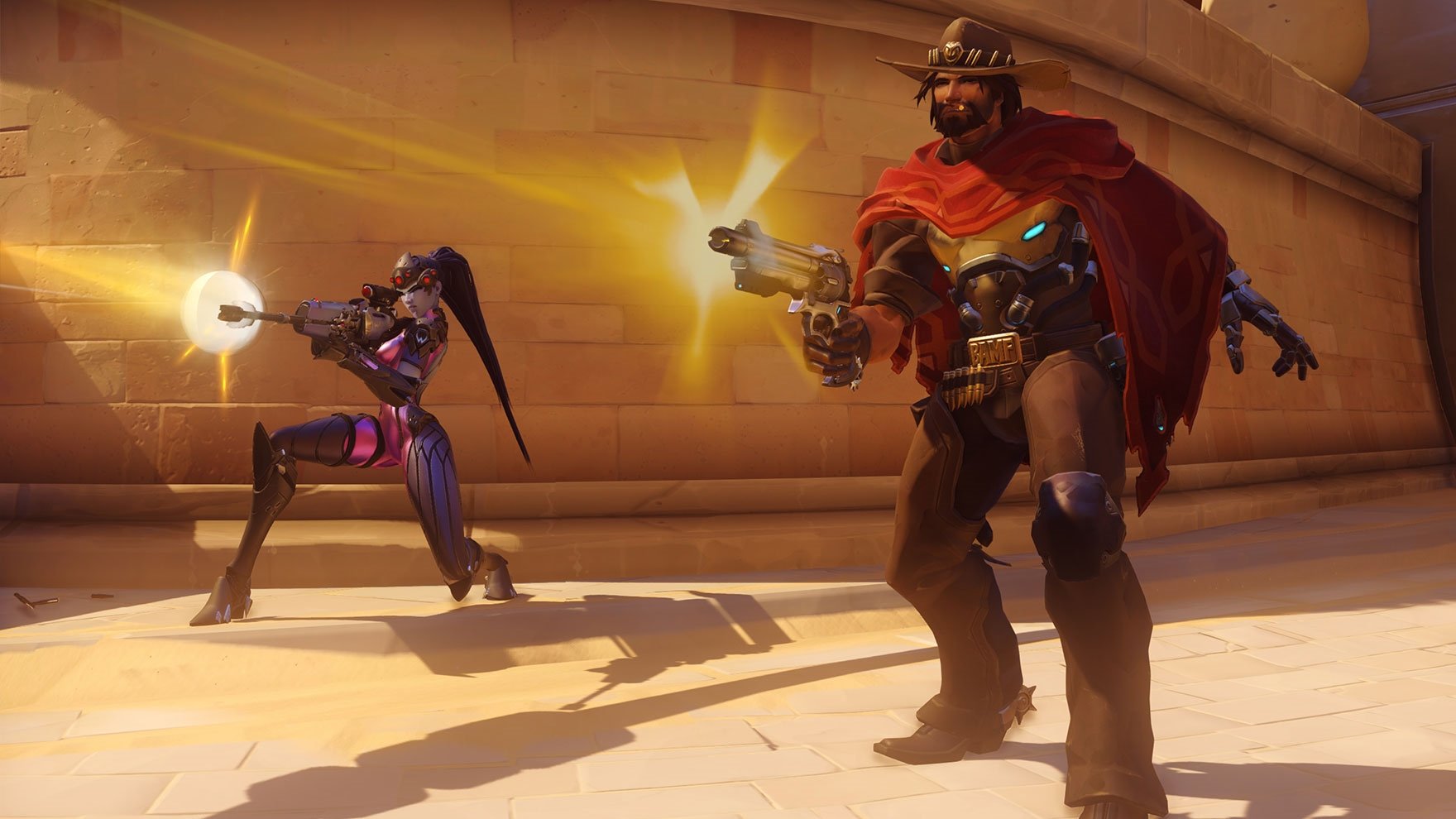
Cassidy mostly plays like he did in the original Overwatch, but there have been some fairly significant changes made to his kit.
- Base health reduced from 225 to 200
- Flashbang has been removed.
- Gained Magnetic Grenade.
- This ability sticks to enemies and explodes.
- Damage reduced from 131 to 120
- Peacekeeper
- "Fan the Hammer" fire rate increased by 7.5%.
- Primary fire falloff range increased from 20 to 25 meters
- Combat Roll
- Grants 50% damage reduction when used.
- Movement is no longer blocked by enemy player collision
- Deadeye
- Now grants 40% damage reduction.
- Maximum duration is increased from 6 to 7 seconds.
- Deadeye also builds at 130 damage/second for 2 seconds and then ramps up to 260 damage/second.
- Ultimate cost has also been increased by 10%.
By far, the most significant change in Cassidy's kit is the removal of his Flashbang. The Magnetic Grenade that replaces it is a powerful burst damage ability, but the lack of a stun means that Cassidy is now more vulnerable to close-range heroes such as Reaper, Tracer, and Doomfist. With that said, the Deadeye Ultimate is considerably more viable now than in the original Overwatch since it reduces incoming damage significantly and can be channeled for longer. The 10% cost increase is mostly compensation for the new Magnetic Grenade's damage, so Cassidy players won't notice it much.
Cassidy is one of Overwatch 2's best mid-range duelists now that he has a burst damage ability to compliment the power of his Peacekeeper revolver, and also because his Combat Roll now gives him significant damage resistance. However, he's not very effective against long-range heroes like Widowmaker. With that said, he's more effective at range now than he was before since the falloff range of his Peacekeeper was extended in Season 3.
Additionally, since you no longer have a stun that can keep enemies in place, you shouldn't use Fan the Hammer often unless you're shooting into tank barriers. Going for headshots will almost always be more effective, especially since quickly emptying Peacekeeper's clip can leave you reloading and thus, defenseless.
In Season 4, Cassidy will be a bit less effective than he was before due to a 25 HP reduction to his health and a slight damage nerf to Magnetic Grenade. Even with these tweaks, though, we expect that he'll be a popular and effective damage character.
D.Va balance changes
D.Va hasn't been changed radically, though the adjustments she did receive have quite an impact. Here's what they are:
- Total mech health increased from 600 to 650. Normal health increased from 300 to 350.
- Primary fire movement speed penalty reduced from 50% to 40%.
- Fusion Cannons weapon spread reduced from 4 to 3.75.
- Boosters impact damage increased from 10 to 15.
- Micro Missiles cooldown reduced from 8 to 7 seconds.
- Call Mech Ultimate cost reduced by 12%.
These changes make D.Va slightly less tanky overall than she was before due to the loss of 100 armor health. However, since armor is better overall in Overwatch 2, her armor health will be harder for enemies to get through. The extra 50 total health also gives her mech a better chance to survive instances of massive burst damage such as Roadhog's Chain Hook into Scrap Gun combo. The buff to her movement speed and the reduction of her primary fire spread means that D.Va is now more mobile in combat and can land critical hits easier, making her more versatile and powerful.
By increasing the impact damage of her Boosters and slightly reducing the cooldown of Micro Missiles, D.Va will now be able to aggressively deal strong bursts of damage against her opponents more frequently. The lowered cost of her Call Mech Ultimate in "Baby D.Va" form will also make it easier for players to get their mech back if they lose it in combat.
Similar to the original game, the best way to use D.Va is to nullify enemy projectiles and abilities with her Defense Matrix while harassing foes with her Fusion Cannons and Micro Missiles. Her Boosters are also as useful as ever for chasing down enemies and bullying ranged heroes off high-ground positions.
Doomfist balance changes
Doomfist is another hero who has gotten a complete rework in Overwatch 2; he's now a tank instead of a damage character. Here's a full breakdown of the most recent changes to his kit:
- Rocket Punch
- Impact damage range (minimum-maximum) increased from 15-30 to 25-50 damage
- Wall slam damage range (minimum-maximum) reduced from 20-40 to 10-30 damage
- Empowered Rocket Punch wall slam stun duration range reduced from 0.5-1 to 0.25-0.75 seconds
- Non-Empowered Rocket Punch now stuns for the minimum 0.25 second duration on wall slam
- Empowered Rocket Punch knockback radius reduced from 4 to 3 meters
- Minimum time before cancel option becomes available reduced from 0.25 to 0.12 seconds
- Cooldown increased from 3 to 4 seconds
- Power Block
- Cooldown reduced from 8 to 7 seconds
- Duration increased from 2 to 2.5 seconds
- Minimum damage mitigated required to empower Rocket Punch increased from 80 to 100 damage
- Meteor Strike
- Now empowers Rocket Punch on landing
- Enemy slow duration increased from 2 to 3 seconds
- The Best Defense...
- Maximum temporary health increased from 150 to 200 health
- Temporary health gained per target hit with abilities decreased from 40 to 35 health.
As a tank, Doomfist's overall role in combat is now to soak up damage with Power Block and draw aggro from enemy players instead of assassinating squishy targets with his Rocket Punch. However, he can still dish out plenty of consistent damage and disrupt enemy formations with his knockbacks. While Rocket Punch isn't nearly as powerful as it once was, its ability to push back multiple targets allows Doomfist to open enemies up to follow up damage from his allies. Seismic Slam now also works like Winston's leap, allowing him to quickly get into the thick of the fight easily. The recent buffs given to him in Season 2 make him more deadly and less exploitable, which should raise his overall power level considerably.
Generally, Doomfist is most effective when fighting team compositions that don't have much mobility, as heroes like Tracer and Genji can avoid his punches with relative ease. In contrast, grounded heroes such as Reinhardt, Orisa, Sigma, Bastion, and Soldier: 76 struggle to avoid Doomfist's abilities. Doomfist is also a very strong counter to immobile supports like Zenyatta and Baptiste, as neither of them can quickly escape from Rocket Punch stuns or Seismic Slam dives.
The recent buffs to Doomfist in Overwatch 2 Season 2 have improved his ability to brawl on the frontlines and survive large amounts of damage, though some follow-up tweaks have reduced the frequency and potency of his Rocket Punch attacks and his temporary health boosts.
Echo balance changes
Echo is largely the same as she was in the original Overwatch, though her Ultimate has been nerfed in a significant way. Here's what the developers changed:
- Focusing Beam maximum DPS reduced from 200 to 175.
- Duplicate max health reduced from enemy hero HP total to a maximum of 300. For example, even though D.Va has 650 health, duplicating her will only give Echo 300 health.
Aside from a slight nerf to Echo's Focusing Beam, the only difference between her kit in Overwatch 2 compared to the original is a 300 HP cap on her Duplicate Ultimate. This change was made because many Echo players felt like duplicating tanks was always the best option in fights due to their high health pools. Also, because tanks have been buffed significantly overall in Overwatch 2, being able to have two of them on the field without any limitations would likely have made Duplicate feel too strong.
Echo isn't the strongest damage hero in Overwatch 2, but she's still viable in the right hands. Her Flight and Glide abilities give her consistent and valuable mobility, while her Tri-Shot weapon and Sticky Bombs are capable of good burst damage. Her Focusing Beam is also one of the best abilities in the game for confirming kills despite the new nerf to it, as it ramps up to double damage whenever Echo's target is at half health or below.
She's best played alongside a Mercy who can keep up with her airborne movements and heal or damage boost her. She also has a natural synergy with Zenyatta since his Orb of Harmony can keep her healed consistently while his Orb of Discord makes her Focusing Beam even better at finishing off injured heroes. She's weak against characters with hitscan weapons such as Soldier: 76, Cassidy, and Ashe, and she's also particularly vulnerable to being hooked by Roadhog.
Genji balance changes
Due to his recent resurgence in Overwatch 2, Blizzard has made some adjustments to his kit in an effort to tweak his overall effectiveness and uptime.
- Maximum ammo reduced from 30 to 24.
- Shuriken damage reduced from 29 to 27.
Genji has proven to be one of the deadliest DPS heroes in Overwatch 2 since the 5v5 metagame favors aggressive and mobile play. Though these nerfs reduce his damage uptime and make his shurikens a bit less deadly, he's still a force to be reckoned with and one of the best damage characters you can play in "dive" compositions.
Hanzo balance changes
Hanzo has only gotten one change in Overwatch 2, which is a slight nerf to his Storm Arrows:
- Storm Arrow damage reduced from 70 to 65 per shot.
Assuming you don't hit any headshots, this means that you'll need four Storm Arrows to kill a 200 HP hero instead of three, which is likely a change that the developers made with Overwatch 2's lower amount of shielding in mind. Aside from that, Hanzo plays just like he did in the original Overwatch, effectively fulfilling the role of mid-to-long-range sniper.
Widowmaker will generally be much more effective than Hanzo in most situations due to her longer range and hitscan sniper rifle, though Hanzo can be a better choice in maps with fewer long-range sightlines such as King's Row. Hanzo is also arguably better than Widowmaker on Push maps, as he's able to keep up with the back-and-forth nature of the mode more effectively.
Generally, Hanzo is best against projectile characters like Pharah and Junkrat as well as Torbjörn and his turret, though he can also duel heroes like Cassidy and Ashe effectively, too. However, Hanzo struggles when facing shield-focused compositions lead by Reinhardt or Sigma, as their barriers make it difficult for him to deal effective damage.
Junker Queen balance changes
Following her initial release, Junker Queen has gotten a few changes:
- Base health increased to 450.
- Rampage radius reduced from 6 to 5 meters.
- Torso and head hit volume size increased 12%
- Rampage
- Wound duration reduced from 5 to 4.5 seconds
- Ultimate cost reduced by 10%
- Jagged Blade
- Thrown impact damage reduced from 80 to 50
- Thrown direct impacts now add a 30 damage wound to the stuck target. Stacks with wounds caused by Quick Melee or returning Jagged Blade hits.
- Commanding Shout
- Radius reduced from 20 to 15 meters.
- Allied health bonus reduced from 100 to 50 HP.
- Maximum duration reduced to 3 seconds.
- Cooldown reduced from 15 to 14 seconds
- Carnage
- Cooldown is now reduced by 2 seconds for each enemy it impacts
- Adrenaline Rush
- Adrenaline passive healing multiplier increased from 1 to 1.25x damage dealt by wounds
- Now heals for the remaining wound damage when an enemy dies with wounds on them
Junker Queen was playable during the second Overwatch 2 beta, and is now available since Overwatch 2 is officially live. She's one of the most aggressive tank heroes that Blizzard has ever designed, with multiple abilities that help her close the distance with foes and then dish out strong damage.
Commanding Shout allows Junker Queen to buff herself and her allies with a speed boost and a burst of extra health, so she's one of the best heroes for pushing through well-defended chokepoints. Her secondary fire allows her to stick enemy players with her knife and pull them towards her, while her Scatter Gun primary fire and Carnage axe slash ability give her options for dealing close-range burst damage. Junker Queen's Ultimate, Rampage, gives her the ability to leap forward and slash at enemies in a wide arc, dealing damage and causing an anti-heal debuff similar to the one caused by Ana's Biotic Grenade.
Notably, a recent buff to the Carnage ability allows Junker Queen to reduce its cooldown by two seconds per enemy hit with the ability. This change allows Junker Queen to be more active and aggressive than she could be before, especially when she's matched up against grouped up opponents that she can cleave through easily. Another buff introduced in Season 3 also gave her 25 additional health, making her slightly more resilient.
She also has two passive abilities. The first turns her quick melee into a knife slash that wounds enemies and inflicts bleed damage. The second allows her to heal from all damage caused by the wounds inflicted by her knife slash, Carnage, and Rampage.
While Blizzard generally prefers to introduce new heroes in a powerful state, her Commanding Shout ability has had its overall effectiveness reduced since it was proving to be too oppressive. With that said, buffs have improved her healing abilities and have made her Ultimate less expensive, though she's a little easier to hit now due to hitbox adjustments.
Junkrat balance changes
Junkrat's Frag Launcher has been buffed considerably for Overwatch 2, though overall, very little of his kit has changed. However, the damage of his Concussion Mines was recently nerfed in Season 3:
- Frag Launcher
- Projectile size increased from 0.2 to 0.25.
- Concussion Mine
- Maximum damage reduced from 120 to 100
- Steel Trap
- Damage has been increased from 80 to 100.
- Projectile speed has been increased from 10 to 15.
- Arming time increased from 0.5 to 0.75 seconds.
- Trapped duration reduced from 3 to 2.5 seconds.
Junkrat's Frag Launcher projectiles now have a larger hitbox, which will make it easier for players to directly hit opponents with grenades and achieve maximum damage. Steel Trap is also more effective in Overwatch 2 compared to the original's version damage-wise, though it takes a little longer to arm and doesn't trap opponents for as long.
In our opinion, Junkrat is a hero whom many players sleep on. He's not as mobile as characters like Genji, Tracer, or Sombra, but he's still able to move around the map relatively quickly with Concussion Mine jumps. On top of this, his Frag Launcher is capable of incredible damage if you master its projectiles, and combining it with the burst damage of one of his Concussion Mines can result in some very quick kills. This is now harder to do against high-health characters, though, as the damage of the mines was reduced from 120 to 100 in Season 3.
He's also effective at blowing through Reinhardt and Sigma barriers, and he's even a solid pick against Doomfist since the Steel Trap halts him in his tracks and prevents him from using the abilities he needs to stay alive. Other heroes are much more reliable and consistent overall but don't overlook Junkrat if you're struggling to deal with tanky compositions or want to surprise your opponents with an off-meta hero.
Kiriko balance changes
Since her introduction, Kiriko has gotten some changes that make her Ultimate a little less powerful, but also help her feel more consistent and responsive. On top of that, she recently got a small nerf to her Healing Ofuda uptime:
- Arm hit volumes width reduced 15%
- Added an auto-wall climb hero option
- Healing Ofuda
- Recovery time increased from 0.85 to 1 second
- Kitsune Rush
- Ultimate cost increased by 10%
- Movement speed bonus reduced from 50 to 30%
- Cooldown rate reduced from 3 to 2 times faster
- Protection Suzu
- Cast time reduced from 0.15 to 0.1 second
- Invulnerability time reduced from 1 to 0.85 seconds
- Kunai
- Ammo increased from 12 to 15
- Swift Step
- Ability input can now be held to activate
Kiriko is the third and final new Overwatch 2 launch hero, and she's also the first new support hero since Baptiste was released in 2019. Much like Brigitte, she's a "battle healer" that excels on the frontline since she's capable of doling out impactful healing and powerful damage. Her Healing Ofuda provide strong single-target healing that's easy to aim since they track to her allies, while her secondary Kunai deal plenty of good damage when she lands critical hits with them. Notably, her Healing Ofuda recovery time was recently increased, as Blizzard felt players were healing with Kiriko too much and too quickly. The developers are hoping to encourage a good balance of healing and Kunai damage with this change.
Kiriko's Protection Suzu ability also allows her to throw out a bell that makes her and her allies invincible for a a brief moment, which can be used to save teammates from deadly Ultimates and other powerful abilities. It even cleanses debuffs and stuns, allowing Kiriko to counter enemy Reinhardt Earthshatters, Ana Biotic Grenades, and more. When she needs to retreat or get close to a teammate, Kiriko can use her Swift Step. This move lets her instantly teleport to an ally, and even works through walls.
Finally, there's Kiriko's Kitsune Rush Ultimate. This ability creates a large path on the ground that buffs Kiriko and her allied with increased movement, attack, and reload speed, as well as quicker ability cooldowns. It's fantastic for pushing objectives, but can also be used effectively in defensive situations when your team is moving to counterattack the enemy after successfully fending off their initial assault. Even though it was nerfed at the start of Season 2, it's still an excellent Ultimate with high game-winning potential.
Lucio balance changes
Lucio is another hero who hasn't changed much in Overwatch 2, though some notable balance tweaks were made.
- Crossfade
- Self-healing penalty increased from 30% to 60%.
- Sound Barrier
- Ultimate cost reduced 7%
In Overwatch 2, Lucio gets his Sound Barrier Ultimate noticeably faster, although his ability to heal himself with his Crossfade ability has been nerfed to balance the fact he can now self-heal an additional 15 HP/second thanks to the new support hero passive. This means that Lucio will be less efficient at healing himself if you're not good at using wall riding to avoid being damaged, but he'll be more self-sufficient if you can wall ride out of enemy range or into cover while fighting.
Lucio is arguably the strongest support hero in Overwatch 2 right now since his ability to speed up his allies is extremely powerful in the 5v5 era, and the fact that he can duel many damage heroes effectively makes him very versatile. He's very effective in any composition and can be quite difficult to counter. Lucio's biggest threats are characters with abilities that can counter his speed with slowing effects, such as Mei or Doomfist. He can also struggle to fight long-range characters like Pharah, Ashe, or Widowmaker, though good Lucio players will undoubtedly be very difficult to hit with precision heroes like these.
Mei balance changes
Mei has received a plethora of changes in Overwatch 2 that alter how she plays, though she's very similar to the original Overwatch version. Here are the tweaks the developers made:
- Endothermic Blaster
- Freeze stun removed.
- Immediately slows targets by a constant 50% instead of building up over time.
- Slow duration reduced from 1.0 to 0.5 seconds.
- Damage per second increased from 55 to 100.
- Ammo increased from 120 to 150.
- Cryo-Freeze no longer removes Sigma Gravitic Flux effect.
- Ice Wall
- Pillar health reduced from 400 to 250.
- Range reduced from 35 to 20 meters.
- Blizzard
- Ultimate cost reduced 5%
While Mei losing the ability to hard stun a player by freezing them seems like a nerf, the fact that her Endothermic Blaster's damage per second has been doubled means her damage output is more consistent. On top of that, the weapon can fully slow down players instantly now, making that aspect of her kit more useful overall. Ice Wall is still a powerful tool for splitting up enemy formations or protecting teammates from damage despite the nerf to its health, and while the Blizzard Ultimate does have a higher cost, Mei's increased damage output means that in reality, you'll get it just as fast as you did in the original game. Blizzard also still has the ability to freeze targets, making it a very potent objective-clearing Ultimate.
Mei is best played both with and against grounded and brawly heroes such as Reinhardt, Sigma, Orisa, Junkrat, and Bastion. She's still a niche pick due to how powerful more mobile heroes are on most maps, but she's a good choice in tighter maps like Dorado or King's Row. She gets hard countered by long-range heroes like Pharah and Widowmaker, though.
Mercy balance changes
Mercy is yet again getting some big changes in Season 4. Here's what they are:
- Regeneration Passive
- "Regeneration" Passive removed
- New Passive: "Sympathetic Recovery"
- Mercy heals herself for 25% of healing done with the Caduceus Staff
- Angelic Descent
- Will now additionally slow ascent speed if held, not just descent speed.
- Can now be activated by holding Crouch while airborne.
- Guardian Angel
- Cooldown reduced from 2.5 to 1.5 seconds
- Jump and Crouch cancel active ability state duration increased from 1.0 to 1.5 seconds
- The Jump and Crouch cancel active ability state can no longer be manually interrupted to begin the cooldown early
- Caduceus Staff
- Healing-per-second increased from 45 to 55
- Healing is no longer increased for allies under half health
- Weapon swap time reduced from 0.5 to 0.35 seconds.
- Valkyrie
- Support role passive healing is now active for the duration of Valkyrie
- Caduceus Blaster
- Ammo increased from 20 to 25
Mercy lacks the huge bursts of impact that supports like Ana and Lucio have, but the tradeoff is that she's also the best support in the game in terms of overall consistency. Her ability to rapidly fly between teammates and heal or damage boost them is very valuable, and her Guardian Angel flying ability also makes her very "slippery" and difficult for enemy damage heroes to pick off.
The Valkyrie Ultimate's ability to chain healing or damage boosts to Mercy's entire team makes it an excellent tool for pushing or holding objectives. Mercy is weak to hitscan characters like Soldier: 76 and Ashe who can shoot her out of the air easily, but is very effective with other airborne characters such as Pharah or Echo.
Notably, the developers are reverting most of the Season 3 changes to her kit that converted her into a "triage healer" in Season 4, and are also walking back the controversial changes to her Guardian Angel movement techs. In the new season, she'll control just like she used to, although Blizzard is limiting the frequency of her super jumps a bit.
Moira balance changes
Though she didn't get any changes or reworks when Overwatch 2 launched, Moira has gotten some interesting tweaks in Overwatch 2 Season 4. Here's what you need to know:
- Fade
- Can now be activated during Coalescence
- Biotic Grasp
- Lingering heal duration increased from 2 to 3 seconds
- Coalescence
- Ultimate cost reduced 5%
- Bonus movement speed reduced from 50 to 40%
- Biotic Orb
- Dealing damage with Biotic Orb now restores a small amount of Biotic Energy
Moira is as effective as she's ever been in Overwatch 2, and while other support heroes with higher skill ceilings tend to outperform her in the high ranks, she's an excellent pick in casual game modes like Quick Play. Her Biotic Grasp is fairly easy to use and is quite effective for both attacking and self-defense, making Moira one of the most self-sufficient supports in the roster. The new buff to her Biotic Orb also improves her uptime, allowing her to heal longer than she could before.
In Season 4, Moira is expected to be even more effective thanks to the recent changes to her Fade. Now that it can be used during Coalescence, the Ultimate is less risky to use and still allows Moira to access her escape tool. Note that the Ultimate will continue channeling after Fade ends, so don't worry about cancelling it.
Moira is most effective when used with close-range brawl compositions, as her "spray" healing is most effective when it can be applied to multiple allies at once. The Coalescence Ultimate is also perfect for this type of formation, as it heals allies while also damaging enemies it comes into contact with.
Moira can be frustrating to fight with characters like Tracer or Genji, but she's completely helpless against any enemy that's far away from her. Additionally, burst damage can also mitigate the effectiveness of her self-healing. Characters like Widowmaker, Ashe, Sojourn, and Pharah are all excellent picks against her, as is Roadhog. Reinhardt can pummel her up close whenever she doesn't have Fade available, and both Winston and D.Va have the mobility necessary to chase her down after she tries to escape with it.
Orisa balance changes
Out of all of the reworks in Overwatch 2 so far, Orisa's is arguably the most significant. Compared to the "bunker tank" she was in the original game, Orisa is now an offense-oriented character who can push into enemy lines and push them back to take ground, similar to Reinhardt. Here's a full breakdown of her new kit, as well as some of the tweaks it's gotten since launch:
- Protective Barrier removed.
- Halt! removed.
- Supercharger Ultimate removed.
- Base armor increased from 200 to 275. Base health increased from 200 to 275.
- Gained Augmented Fusion Driver
- This weapon deals 12 damage per shot and has a critical hit bonus of 100%. It also doesn't have a magazine and is instead heat-based. When the weapon overheats, players cannot fire for 3 seconds.
- Damage falloff reduced from 25 to 15 meters
- Fortify
- Now provides Overhealth when activated, and it also prevents her from taking critical damage.
- It also reduces heat buildup on Orisa's Augmented Fusion Driver by 50% while active.
- Duration increased from 4 to 4.5 seconds.
- Overhealth bonus reduced from 125 to 75.
- Gained Energy Javelin.
- This ability allows Orisa to throw an energy javelin that deals 60 damage, stuns enemies for 0.2 seconds, and knocks them back 6 meters.
- If an enemy collides with a wall when struck with the javelin, they take an additional 40 damage and are stunned for an extra 0.3 seconds.
- Six second cooldown.
- Gained Javelin Spin.
- Orisa rapidly spins an energy javelin for 1.75 seconds, destroying enemy projectiles and gaining a 50% buff to forward movement speed while active.
- Orisa can also use this ability to push enemies back and deal up to 90 damage.
- Seven second cooldown.
- Gained Terra Surge Ultimate.
- Orisa pulls enemies in and gains the effects of Fortify, dealing an area-of-effect attack over 4 seconds of charging.
- Releasing the attack deals up to 500 damage depending on how long the attack was charged.
- While the attack is charging, Terra Surge deals minor damage over time and slows enemy movement by 30%.
- Now pierces through barriers upon impact
- Damage falloff range increased from 15 to 25 meters
With the removal of her shield and Halt! crowd control, Orisa players now need to make effective use of her Energy Javelin and Javelin Spin ability to push into enemies and take ground. Her extra health and armor allow her to soak up more damage than she could before, and her new Augmented Fusion Driver can deal tons of damage up close. However, it should be noted that Orisa's Fortify now provides 50 less Overhealth than it did before, making her considerably easier to take down with focus fire and strong burst damage while it's active. In Season 3, her Augmented Fusion Driver's falloff range was also significantly reduced from 25 meters to 15, making the weapon ineffective beyond close and mid-range.
She's generally pretty effective against most heroes, though she struggles to deal with airborne characters and "tank buster" heroes like Junkrat and Bastion. She's also weak against Zarya, as Zarya can damage her through her Javelin Spin with her Particle Cannon primary fire.
Notably, Orisa recently got a huge buff to her new Terra Surge Ultimate that allows it to damage opponents through shields. This completely prevents characters like Reinhardt and Sigma from being able to counter the ability with their barriers, giving her a power boost in close-up brawls.
Pharah balance changes
Pharah has received a few small buffs in Overwatch 2. Here's what has changed:
- Rocket Launcher reload starts 0.25 seconds faster when out of ammo.
- Concussive Blast now deals 30 damage and deals additional knockback on direct hits.
- Barrage
- Ultimate cost reduced 5%
The improvements to her Rocket Launcher and Concussive Blast are nice, but overall, Pharah continues to struggle in Overwatch 2 since the hitscan heroes that naturally counter her are very strong. She's capable of huge damage from above if you can catch foes off-guard, but unless the map you're on has tall structures you can use to take cover or hide your approach while flying, you'll be easy pickings for an accurate Soldier: 76, Ashe, or Widowmaker. If you do decide to play Pharah, make sure you have a Mercy that can fly with you, heal you, and damage boost your rockets.
Ramattra balance changes
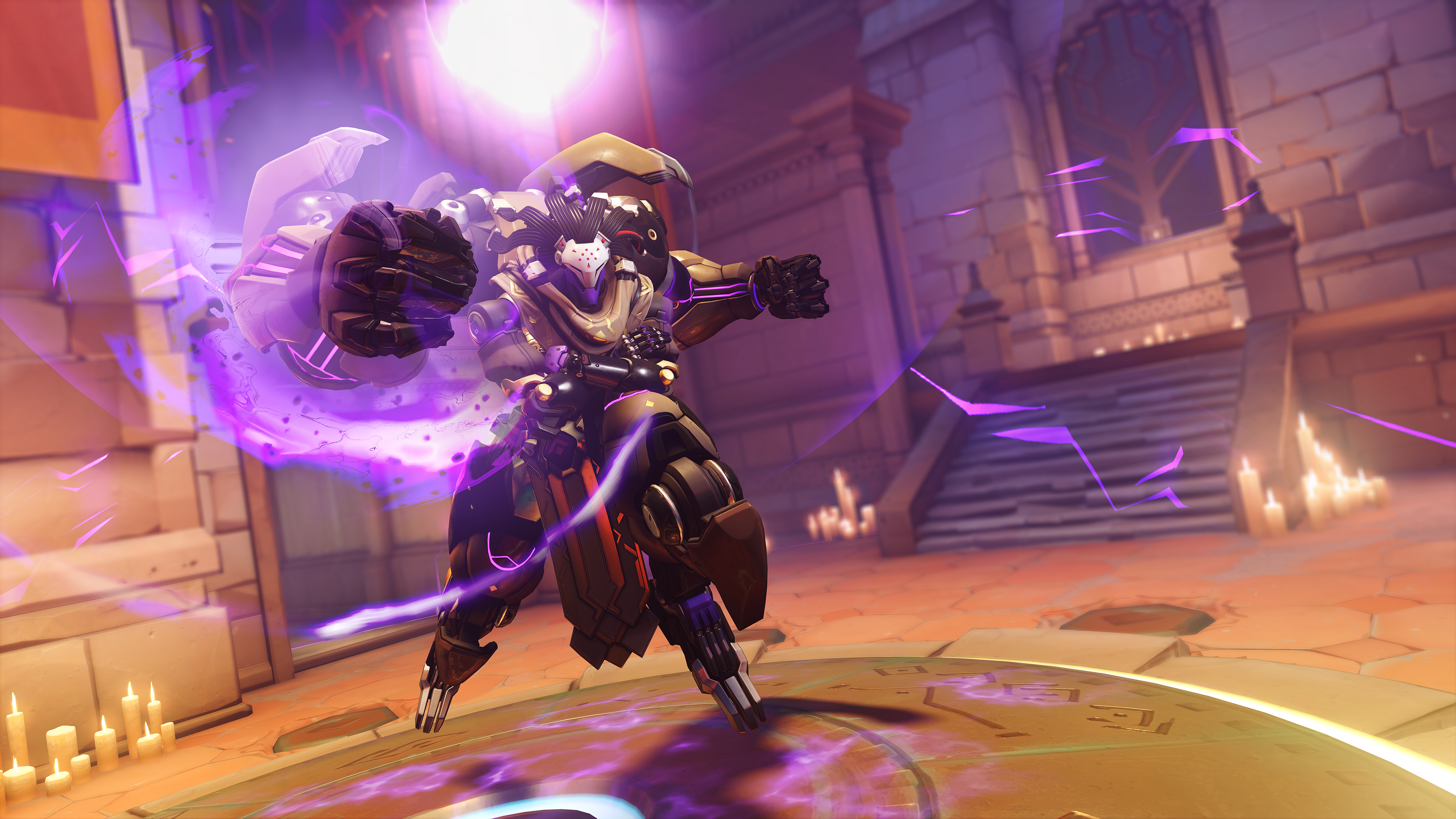
Since his introduction at the start of Overwatch 2 Season 2, Ramattra has gotten a few fairly significant buffs. However, his Ultimate was nerfed significantly at the start of Season 3:
- Annihilation
- Damaging enemies with the ultimate now slows the duration timer down instead of pausing it entirely. Lasts up to 20 seconds.
- Ultimate cost increased 12%
- Nemesis Form
- Movement speed increased by 20%
- Armor bonus increased from 150 to 225
- Void Barrier (Omnic Form)
- Cooldown reduced from 15 to 13 seconds
Ramattra's dynamic ability kit is powerful in the right hands, but the character's slow overall speed and long shield cooldown made him feel underwhelming. The above buffs allow him to get into position easier with Nemesis Form and help him take space with his barrier more frequently, making him more of a serious threat to his enemies.
Notably, his increased armor bonus for Nemesis Form will also make Ramattra much harder to kill while he's blocking, as his opponents now have much more tanky armor HP to chew through on top of the significant damage reduction offered by the blocking itself. This will undoubtedly make Ramattra one of the best tanks for contesting objectives, especially if he's got the Annihilation Ultimate active. The 20% buff to his speed is also significant, as it makes it more difficult for enemies to get away from him.
However, the nerf to Annihilation caps its duration and makes it harder to get, which considerably reduces the power of the Ultimate. Fighting Ramattra on objectives should now feel much less overwhelming as a result of the change.
Reaper balance changes
Reaper has gotten some minor nerfs to his shotguns in Overwatch 2:
- Death Blossom
- Ultimate cost reduced 8%
- Hellfire Shotguns
- Damage per pellet reduced from 6 to 5.4.
- Spread increased from 6 to 7.
These changes to Reaper's shotguns make them slightly less potent in combat, but since the battlefields of Overwatch 2 are more open and aren't as clogged up with tanking abilities, Reaper is significantly more viable overall than he was in the original game.
He's best against slower characters who don't have much mobility and can be easily flanked with his Shadow Step teleport, especially since there aren't many stuns in the game that can interrupt his Death Blossom Ultimate anymore. However, he has a hard time fighting characters who can frequently reposition or take to the skies, such as Pharah, Mercy, Echo, Genji, and Tracer.
Reinhardt balance changes
Reinhardt largely plays the same as he did in Overwatch, though he's been tweaked to fit better into the Overwatch 2 metagame. Some recent buffs to the character have improved his effectiveness significantly:
- Steadfast passive removed (replaced by global tank passive).
- Base armor reduced from 300 to 250. Base health increased from 175 to 200.
- Rocket Hammer
- Knockback impulse reduced from 10 to 6
- Earthshatter
- Direct hit damage reduced from 250 to 170
- Knockdown duration increased from 2.5 to 2.75 seconds
- Ultimate cost increased 7%
- Barrier Field
- Health reduced from 1600 to 1200.
- Regeneration rate reduced from 200 to 144 health per second.
- Charge
- Steering turn rate increased by 50%.
- Can now be manually cancelled.
- Charge Pin wall impact damage reduced from 300 to 225.
- Cooldown reduced from 8 to 7 seconds.
- Fire Strike
- Now has two charges.
- Damage increased from 90 back to 100.
While the lethality of Reinhardt's Charge and Fire Strike abilities were originally lowered, they were recently buffed to be as strong or stronger than they were in the first game. The nerfs to his Barrier Field make it harder for him to shield his teammates for extended periods, though the buff to his health and armor pool means that Reinhardt is much more durable than before.
Reinhardt is outclassed by more mobile tanks like Winston and Doomfist on maps that are more open, but he excels in maps like King's Row that are tighter and have less room for maneuvering. He's most effective at close-range brawling, as his Rocket Hammer and Charge can chunk her health down significantly whenever she doesn't have Fortify available.
In Season 4, Blizzard is reducing both his Armor and overall health a bit since he's been a bit too effective throughout Season 3 after the recent buffs he got. As a result, he'll be a little less tanky, though his brawling power hasn't been touched.
Roadhog balance changes
Roadhog's Ultimate has been reworked completely, and recently, his infamous one-shot hook combo was also nerfed into the ground since it had become too powerful during Season 2.
- Chain Hook
- Impact damage reduced from 30 to 5
- The enemy final position distance from Roadhog after being pulled increased from 3 to 4 meters
- Scrap Gun
- Damage per pellet reduced from 6.6 to 6
- Recovery time reduced from 0.85 to 0.8 seconds
- Reload time reduced from 2 to 1.75 seconds
- Maximum ammo increased from 5 to 6
- Take a Breather healing increased from 300 to 350.
- Whole Hog
- Now has to be fired manually, but it cannot be cancelled with stuns.
- Additionally, Roadhog can use other abilities while Whole Hog is active.
- Maximum duration increased from 6 to 8 seconds
- Ultimate cost increased 8%
Take a Breather's increased healing allows Roadhog to be more resilient and self-sufficient as a solo tank in the 5v5 era, while the rework to his Whole Hog Ultimate makes it much more versatile. Now, Roadhog can combo Chain Hook pulls into his Whole Hog, allowing him to pick off squishy heroes with deadly efficiency. You can also use Take a Breather while Whole Hog is active to heal up if necessary, and the additional two seconds of duration means the Ultimate will be a threat longer than it was before.
With that said, the recent nerf to Roadhog's Chain Hook and Scrap Gun one-shot combo was quite heavy-handed, and as a result, he'll be much less powerful than he was before the latest balance patch. More than ever before, Roadhog will need to rely on his teammates' focus fire to finish off targets he hooks, removing a lot of his value.
Sigma balance changes
Sigma has gotten some notable buffs and a slight nerf in Overwatch 2:
- Base shields increased from 100 to 200.
- Accretion
- Impact damage reduced from 60 to 40 (80 damage total with explosion)
- Knockdown duration increased from 0.8 to 1.1 seconds
- Experimental Barrier
- Regeneration rate reduced from 120 to 100.
- Gravitic Flux
- Ultimate cost increased 7%
Aside from Reinhardt, Sigma is now the only other tank in Overwatch 2 who can protect his teammates with a traditional barrier. The buff to his shield health makes him more durable than he was before, while the increased damage of Accretion makes the ability more powerful and rewarding to land. The slight nerf to his barrier's regeneration means that Sigma players won't be able to keep it up as often, but Sigma's high damage output with Hyperspheres still forces enemies to respect his position.
In Season 4, Sigma is getting a change that lowers the damage of the Accretion rock, but increases the length of its stun. This will make it harder to perform lethal combos with Hyperspheres, but will also make it more potent as a crowd control tool.
Ultimately, Sigma is a strong pick in maps that have lots of hallways and corners to bounce Hyperspheres around, but will struggle against agile characters since they can dodge his abilities easily. His lack of long range moves also makes him weak to snipers like Hanzo or Widowmaker.
Sojourn balance changes
Since she was introduced in the Overwatch 2 beta, Sojourn has had a handful of balance changes that reduce her oppressiveness at longer ranges and lower her overall one-shot kill potential:
- Railgun
- Primary fire fire rate reduced from 15 to 14 shots per second.
- Primary fire spread increased by 28%
- Secondary fire projectile radius scales from 0 up to 0.1 meters based on energy charge level. The higher the energy level, the bigger the projectile radius.
- Energy delay before draining reduced from 8 to 5 seconds
- Secondary fire damage falloff starting range reduced from 70 to 40 meters
- Secondary fire critical damage multiplier reduced from 2 to 1.5
- Secondary fire damage now scales linearly with energy from 30 to 130 damage (1 energy converts to 1 damage added)
- Primary fire damage per projectile increased from 9 to 10
- Overclock energy charge rate increased by 20%
- Railgun energy gain from non-player targets (barriers, turrets, etc.) reduced by an additional 50%.
- Energy gain is no longer based on damage done by primary fire. Each primary fire hit against an enemy player now grants 5 energy
- Primary fire damage per projectile reduced from 10 to 9
- Power Slide
- Cooldown increased from 6 to 7 seconds
- Disruptor Shot
- No longer slows enemy movement
The Railgun changes make it easier for Sojourn to land charge headshots with her sniper-like secondary fire, though the nerf to her primary fire spread and damage as well as her effectiveness against non-player targets means that she can't build charge as rapidly as she could previously.
Previously, Sojourn's Power Slide cooldown was reduced from 7 to 6 seconds. However, this change was recently reverted, as the developers felt it was available too often and made it incredibly difficult to outplay her.
Sojourn's Disruptor Shot ability also had its slowing effects removed, which essentially nukes the usefulness of the ability. Now, instead of being an effective tool for setting up Railgun shots, it's best used as a source of chip damage.
Blizzard has also reworked Sojourn's primary fire energy gain, making it so that each shot landed flatly gives 5 energy rather than a varying amount determined by damage. This makes it impossible for characters like Mercy to boost the rate at which energy is gained, but it does allow Sojourn to get charge faster than she could before against heroes with Armor health.
Sojourn was initially one of the most overpowered heroes in Overwatch 2 due to her incredible range and precision damage, but recent nerfs have toned her capabilities down significantly. Her biggest counters are barrier heroes like Winston, Reinhardt, and Sigma. D.Va is also strong against Sojourn since she can use Defense Matrix to "eat" her Railgun shots.
Soldier: 76 balance changes
Soldier: 76 has received some new nerfs in Overwatch 2, all of which are designed to make him less powerful in an era where tanking shields are less oppressive. Recently, though he got some buffs to compensate:
- Heavy Pulse Rifle
- Damage reduced from 20 to 18.
- Number of shots to reach maximum recoil increased from 4 to 6
- Recoil reduced 12%
- Tactical Visor
- No longer removes damage falloff from the Heavy Pulse Rifle, though players can now score headshots while the Ultimate is active by aiming at an enemy's head.
The reductions to Soldier's damage make it tougher for him to overpower his opponents with raw firepower, though he's still a very powerful pick since there aren't many shields in the game anymore. Though he doesn't have the burst impact of characters like Widowmaker or Ashe, Soldier: 76 is a very reliable, consistent, and well-rounded hero, especially with the recoil reduction for his weapon that was introduced in Season 3. His Helix Rockets are also effective at confirming kills on injured targets, and Biotic Field makes him one of the most self-sufficient damage heroes in the game.
Generally, Soldier: 76 will be the most powerful on maps where you can perch on high ground overlooking capture point or payload objectives. He's also an effective counter to heroes like Pharah, Mercy, and Echo. However, he has a shorter effective range than Ashe or Widowmaker and lacks the vertical mobility offered by Sojourn's Power Slide.
Sombra balance changes
Sombra has been changed significantly in Overwatch 2, and is now more of an assassin-style character rather than a team support. Here's a look at how her abilities were changed:
- Machine Pistol
- Damage increased from 7 to 7.5.
- Hack
- Cooldown reduced from 8 to 4 seconds, but the cooldown is no longer reduced when hacking health packs.
- Cast time increased from 0.65 to 0.85 seconds.
- Health pack hack duration increased from 30 to 45 seconds.
- Ability lock duration reduced from 5 seconds to 1.5 seconds.
- Reveals hacked enemies through walls to Sombra's team for 8 seconds.
- Interrupting Hack during the channel time now incurs the full cooldown.
- Hacked targets are no longer valid targets for hacking for the duration of the effect.
- Stun duration on Bob reduced from 5 seconds to 2 seconds.
- Hack now destroys Baptiste's Immortality Field.
- Stealth fade-in time reduced by 50%. Enemy detection radius increased from 2 to 4 meters.
- Sombra can now use Hack during Stealth without ending the Stealth ability, but is revealed to enemies while hacking and for 0.75 seconds after hacking.
- EMP
- Can now disable Blizzard
- Gains Opportunist passive.
- Damage dealt to hacked targets is now increased by 25%.
Mobility is generally the meta in Overwatch 2, and these changes to Sombra make her one of the game's most effective mobile damage heroes. While her Hack now only prevents enemies from using abilities for just 1.5 seconds, it also makes the victim take 25% more damage from Sombra and her allies and allows her team to see their position for eight seconds. These values were recently reduced from 1.75 and 40%, respectively, as the developers felt Sombra was too strong overall.
These changes, alongside the recent Season 3 buff to Sombra's Machine Pistol damage, make her effective at picking off enemies she's able to catch off guard. However, she can be difficult to play against a coordinated team that can force her to back off or even outright kill her before she's able to do meaningful damage. Maintaining avenues of retreat to hacked health packs is crucial so that you can get back into the fight as fast as possible. She'll also match up better against Mei in Season 4, as her EMP will be able to disable her Blizzard Ultimate.
Symmetra balance changes
Many of Symmetra's abilities have been adjusted for Overwatch 2, though the fundamental way she plays has remained the same.
- Photon Barrier
- Ultimate cost increased 10%
- Photon Projector
- Maximum ammo increased from 70 to 100.
- Secondary fire projectile speed increased from 25 to 50.
- Secondary fire max damage reduced from 120 to 90 (45 impact, 45 explosion).
- Secondary fire max charge projectile size increased from 0.4 to 0.5.
- Secondary fire ammo cost increased from 7 to 10.
- Secondary fire charge time reduced from 1.2 seconds to 1 second.
- Beam charge rate and decay rate increased by 20%
- Primary fire ammo consumption rate increased from 7 to 10 per second
- Primary fire gains ammo from damaging barriers again
- Teleporter
- Build time reduced from 2 to 1 second.
- Teleporter now has a maximum lifetime of 10 seconds.
- Cooldown increased from 10 to 12 seconds (starts when teleporter is placed).
- Health reduced from 300 to 200 (50 health, 150 shields).
- Range reduced from 30 to 22.
- Sentry Turret
- Travel speed increased from 15 to 20.
- Movement speed reduction on targets reduced from 20% per turret to 15% per turret.
While the buff to Symmetra's Photon Projector maximum ammo gives her more uptime overall, the various nerfs to its secondary fire make it more difficult for Symmetra to effectively "poke" at enemies outside of her short primary fire range. Additionally, the improvements to Teleporter build speed and Sentry Turret deployment speed are offset by a health reduction for the former ability and effectiveness nerf for the latter.
Ultimately, Symmetra is probably the weakest hero in Overwatch 2 since she doesn't have enough range to be effective in most damage hero duels and struggles to keep up in the fast-paced metagame of the sequel. Some teleporter strategies can work if your opponent doesn't adapt to them, but overall, you're better off choosing a different character. She was a solid pick when Overwatch had more shields and tanks and defending chokepoints was a larger part of the game's combat flow, but that era has passed.
Torbjörn balance changes
With Overwatch 2 increasing the pace of encounters, Blizzard has improved Torbjörn's overall combat uptime, though the health of his turret was reduced slightly to compensate in Season 3. Here are the tweaks that have been made so far:
- Deploy Turret
- Turret base health reduced from 250 to 225
- Rivet Gun
- Primary fire recovery reduced from 0.6 to 0.55 seconds.
- Rivet Gun secondary fire reduced from 0.8 to 0.7 seconds.
With the reductions to the fire recovery of the Rivet Gun, Torbjörn is now more able to keep up with the fast-paced nature of Overwatch 2. While he's far from being a meta pick, Torbjörn is still an effective choice against flankers since his turret can easily keep up with their movement abilities. He's also a solid pick when coming up against slower compositions, as his Rivet Gun can do a surprising amount of damage to enemy shields and his turret can whittle down slow and tanky characters from afar.
Since the Season 3 patch made his turret less durable, you'll need to place it more carefully, as it's now easier than ever to focus it down. Try and throw it down on an elevated position behind your team's frontline, which will allow it to watch a wide area while also making it difficult for the enemy team to feasibly focus on it rather than you.
Tracer balance changes
Tracer's Pulse Pistols were nerfed slightly in Overwatch 2, but were recently brought back to their original power level in Season 2. However, they then got slightly nerfed again.
- Damage decreased from 6 to 5.5.
Now Tracer's Pulse Pistols do 5.5 damage per pellet, meaning that she's slightly less deadly than she was in the original game. With that said, there's also one less enemy tank she has to worry about, giving her more overall space to work with on the battlefield.
Tracer has always been one of Overwatch's most mobile heroes thanks to the power of her Blink and Recall abilities, and that hasn't changed in Overwatch 2. She's a fantastic hero who performs well when harassing supports like Mercy and Zenyatta, and she's also better against tanks now thanks to the way armor damage mitigation has been reworked. She can also duel most damage heroes in the game effectively, but will have a harder time killing airborne targets like Pharah or faraway enemies like Widowmaker. She's also a weaker choice against Torbjörn, as his turret can keep up with her mobility and she can be killed in one headshot up close by the alternate fire of his Rivet Gun.
Widowmaker balance changes
Widowmaker's previous health buff has been reverted, bringing her HP down to Overwatch 1 levels.
- Base health reduced from 200 to 175.
After the reversion of Widowmaker's HP buff from the start of Overwatch 2, she's not just like she was in the first game. With this reduced health pool, she'll be easier to take down with focus fire, though she's still a significant threat.
She's one of the strongest damage heroes in the game right now due to the lack of strong counters; your biggest threat will likely be another Widowmaker or perhaps a Hanzo, though Genji is also a threat with his high mobility and Deflect ability.
Winston balance changes
Winston received some changes in Overwatch 2, including a new secondary fire ability:
- Base armor increased from 150 to 200.
- Tesla Cannon
- New secondary fire can be used to charge and release a 30-meter range jolt of electricity.
- It deals up to 50 damage and costs up to 12 ammo.
- Barrier Projector
- Health decreased from 700 to 650.
- Duration reduced from 9 to 8 seconds.
- Cooldown reduced from 13 to 12 seconds.
- Primal Rage
- Ultimate cost increased by 20%.
Winston's new Tesla Cannon secondary fire allows him to poke at enemy players whenever he's not diving in with his leap to harass squishy heroes. To account for this additional source of damage, his Primal Rage Ultimate cost has been raised so that Winston doesn't get his Ultimate at unintended rates. His barrier has also been made slightly more durable and has a shorter cooldown, though the duration of the barrier itself has been lowered.
Winston has always been a top-tier pick in Overwatch, and he's even better in Overwatch 2 since Winston is very mobile and has the ability to split up enemy formations with his Barrier Projector bubble, cleaving multiple enemies at once with his Tesla Cannon primary fire. He has the firepower to take down damage and support heroes fairly quickly, and though he isn't able to fight with the opposing team's tank very well, he can use his leap to stay away from them. Winston is also one of the few tanks that's capable of effectively dealing with Widowmaker and other long-range heroes since he can leap to them from afar, forcing them to retreat or reposition.
Winston's main counters are characters that can dish out high volumes of damage very quickly, such as Bastion or Reaper.
Wrecking Ball balance changes
Wrecking Ball has been buffed with extra durability that will help him stay alive longer as a solo tank. Recently, he also got 150 of his health points replaced with shield health, making it easier for him to heal up between engagements.
- Base armor increased from 100 to 150. Base health decreased from 600 to 450.
- Shield health increased from 0 to 150.
- Minefield
- Ultimate cost increased 9%
- Arming time reduced from 1.5 to 1 second
- Pile Driver
- Cooldown reduced from 10 to 8 seconds
- Adaptive Shield
- Radius increased from 8 to 10 meters.
- Health gained per target increased from 75 to 100 health.
- Roll knockback increased by 36%.
Between the buffs to his armor and health, the addition of shield health to his health pool, and the improvements to his Adaptive Shield, Wrecking Ball is more resilient than he's ever been before. This will help him survive as he knocks the enemy team around and softens heroes up with his machine guns. Additionally, Wrecking Ball's knockback against enemies has been improved, allowing him to roll through enemy compositions and split them apart more easily. The reduction of Pile Driver's cooldown in Season 3 also allows Wrecking Ball to use it more often, buffing his ability to disrupt opponents.
Despite these buffs, though, Wrecking Ball is often considered a more niche pick in Overwatch 2. In most cases, other tank heroes are more effective, though Wrecking Ball is useful for quickly getting to and contesting a point by rapidly rolling around it. His Minefield Ultimate is also one of the best area denial abilities in the game, and if you manage to get it during Overtime, it can often be game-winning.
Zarya balance changes
Zarya has some changes that give her more shield uptime in Overwatch 2:
- Base health increased from 200 to 250. Base shields increased from 200 to 225.
- Particle Barrier
- Now has 11-second cooldown on a shared 2-charge system with Projected Barrier (shielding allies).
- Cooldown now begins immediately on ability use instead of when the barrier has expired.
- Allies shielded with Projected Barrier cannot be targeted again by the ability for 2 seconds.
- Graviton Surge
- Ultimate cost increased 8%
- Energy degeneration reduced from 2.2 to 2 per second
- Delay before energy degeneration begins after gaining energy increased from 1 to 2 seconds
With the ability to shield herself twice or protect two allies in quick succession, a reduced energy degeneration rate, and extra health and shields, Zarya's ability to protect her team and dish out powerful damage has been significantly increased. She's arguably one of the strongest tanks in Overwatch 2, as her bubble shields can soak up lots of damage and there aren't many shields in the game that can stop her Particle Cannon. Graviton Surge is also one of the few Ultimates that can force agile heroes into a clump for easy follow-up damage.
Recent nerfs to her barrier cooldown and duration make her more susceptible to damage overall, but she's still difficult to take down once she gets high energy. Some recent minor buffs to her energy degeneration delay and the reduction of her energy degeneration rate have also made it easier for Zarya to keep a high charge once she gets it, helping her remain effective in combat for longer periods of time.
Like other grounded and brawly tanks, she struggles against tank busters like Bastion and Junkrat. Barriers such as Reinhardt's and Sigma's are also great for blocking her Particle Cannon's primary fire damage.
Zenyatta balance changes
In Overwatch 2, the developers have attempted to give Zenyatta some extra survivability against flankers. A new Season 3 buff has also given him five extra Orbs of Destruction to fire before having to reload them.
- Base shields decreased from 175 to 150.
- Orb of Destruction
- Ammo increased from 20 to 25
- Orb of Discord
- Time to fall off target when not in line of sight reduced from 3 to 2 seconds.
- Gained Snap Kick passive.
- Zenyatta's melee attacks deal 50% more damage (45 instead of 30) and knock enemies back significantly.
- Zenyatta no longer gains increased firing speed from Kiriko's Kitsune Rush Ultimate.
While Zenyatta's health new Snap Kick passive help him against agile flankers somewhat, he's still vulnerable to being dove by characters like Genji, Tracer, and Sombra, especially since a recent nerf removed the extra 25 shield HP he gained in the beta previously. Because of this, he's tough to play in the mobility-focused metas of Overwatch 2, although he can be extremely powerful if you're confident enough to duel damage heroes looking to take you out.
Notably, Zenyatta is one of the few characters in the game that can enable quick kills against tanks, as the Orb of Discord debuff makes them significantly easier to take down. Since the Overwatch 2 metagame has significantly fewer shields compared to the original Overwatch, it's much harder to mitigate the 30 percent damage amplification effects of Orb of Discord. Because of this, the hero has quickly become a popular choice at higher skill levels despite his lack of mobility.
Recently, Zenyatta's ability to fire his Orbs of Destruction faster when buffed by Kiriko's Kitsune Rush Ultimate was removed. This is because he could put out a ridiculously overwhelming amount of damage this way. As a result of this change, he's less effective than other characters with Kitsune Rush, although he still benefits from the increased movement and reload speed.
Overwatch 2 is one of the best Xbox games on the market for fans of multiplayer shooters, and it's available now on Xbox Series X|S, Xbox One, Windows PC, PS5, and PS4. Season 4 is scheduled to go live on April 11, 2023, at which point both Lifeweaver and the new season's Battle Pass will become available. If you're a new player and want a head start on progression, consider getting the Ultimate Battle Pass Bundle once Season 4 comes out. It will include Premium Battle Pass access, 20 instant Battle Pass levels, 2,000 Overwatch coins, and several Starwatch skins.
Overwatch 2: Ultimate Battle Pass Bundle
The $30 Overwatch 2: Ultimate Battle Pass Pack offers fans a variety of benefits that will allow them to get guaranteed access to a Premium Battle Pass track, 20 Battle Pass levels, 2,000 Overwatch Coins, and during Season 4, Starwatch skins.

Brendan Lowry is a Windows Central writer and Oakland University graduate with a burning passion for video games, of which he's been an avid fan since childhood. He's been writing for Team WC since the summer of 2017, and you'll find him doing news, editorials, reviews, and general coverage on everything gaming, Xbox, and Windows PC. His favorite game of all time is probably NieR: Automata, though Elden Ring, Fallout: New Vegas, and Team Fortress 2 are in the running, too. When he's not writing or gaming, there's a good chance he's either watching an interesting new movie or TV show or actually going outside for once. Follow him on X (Twitter).
